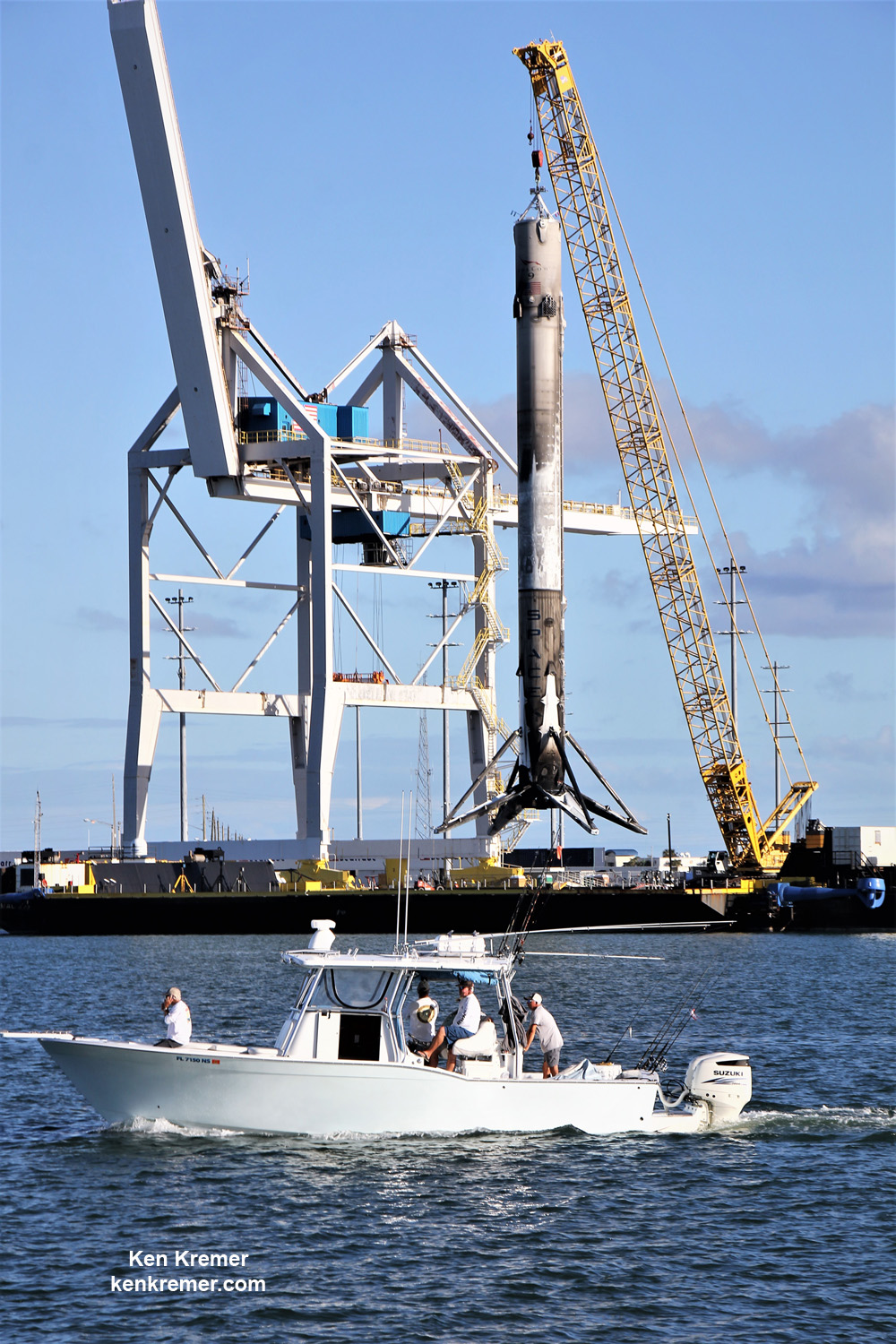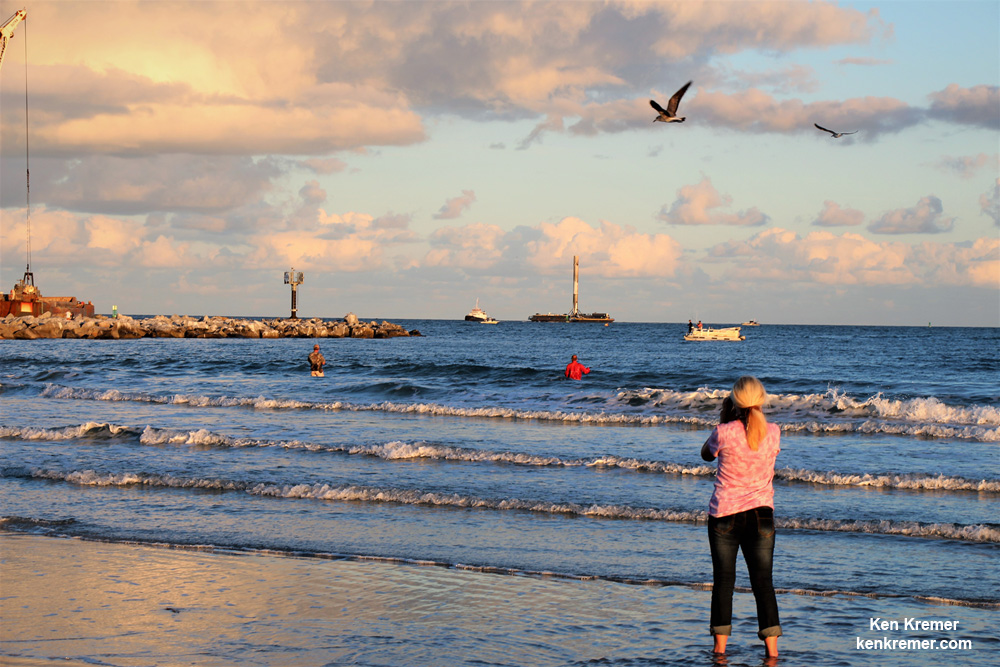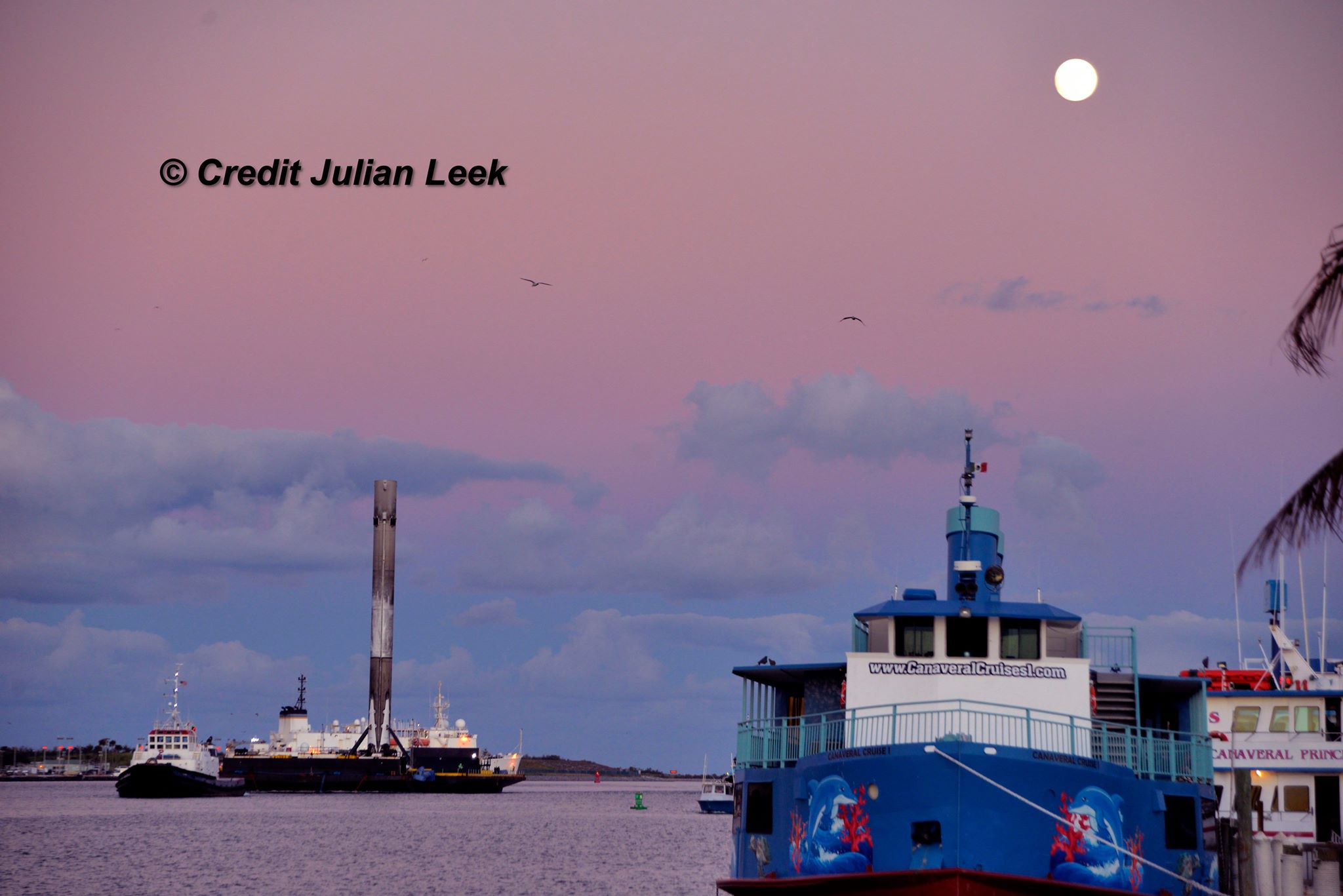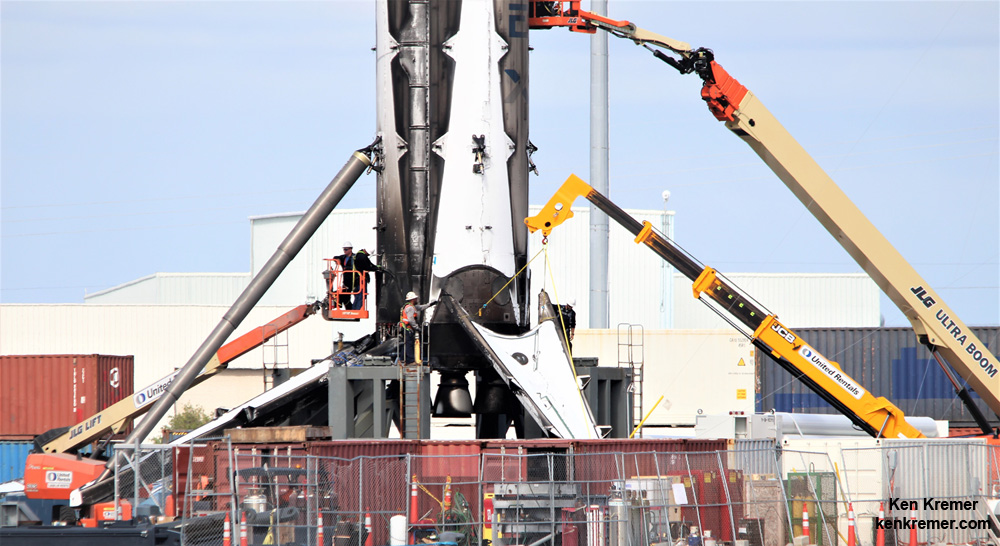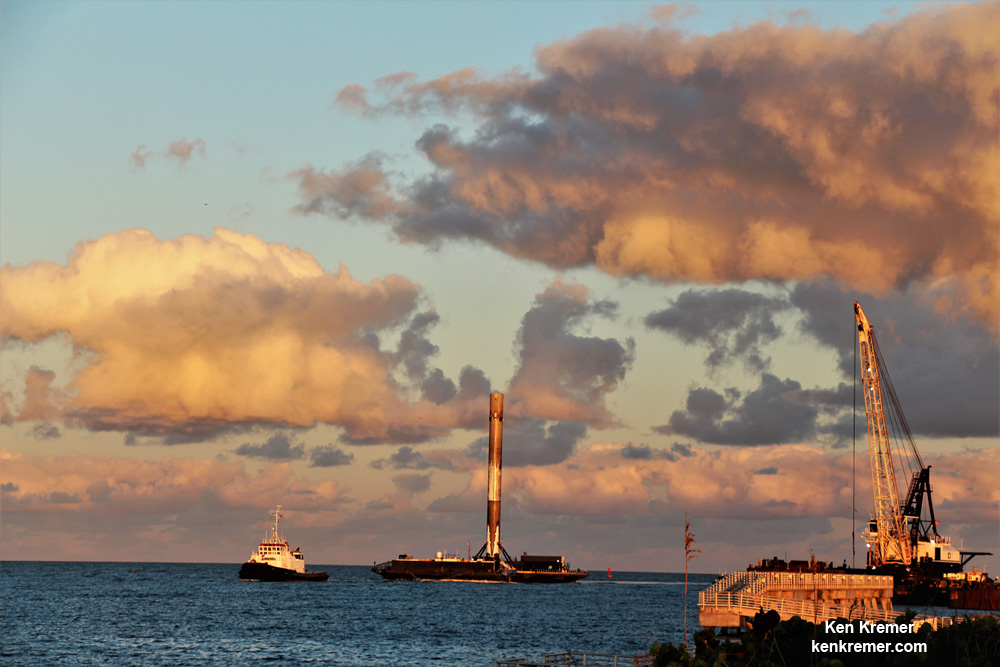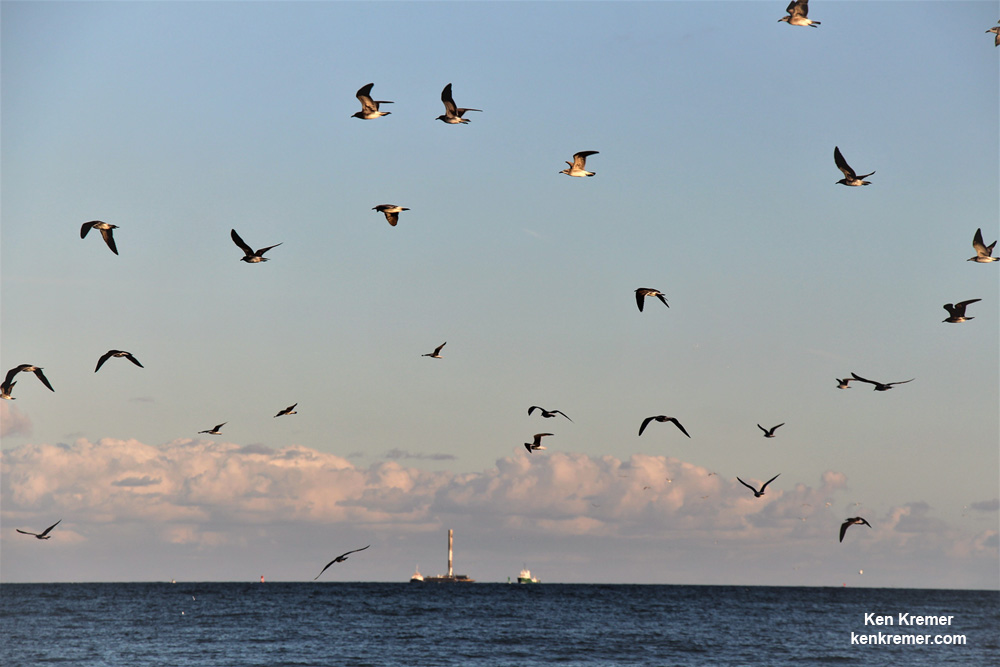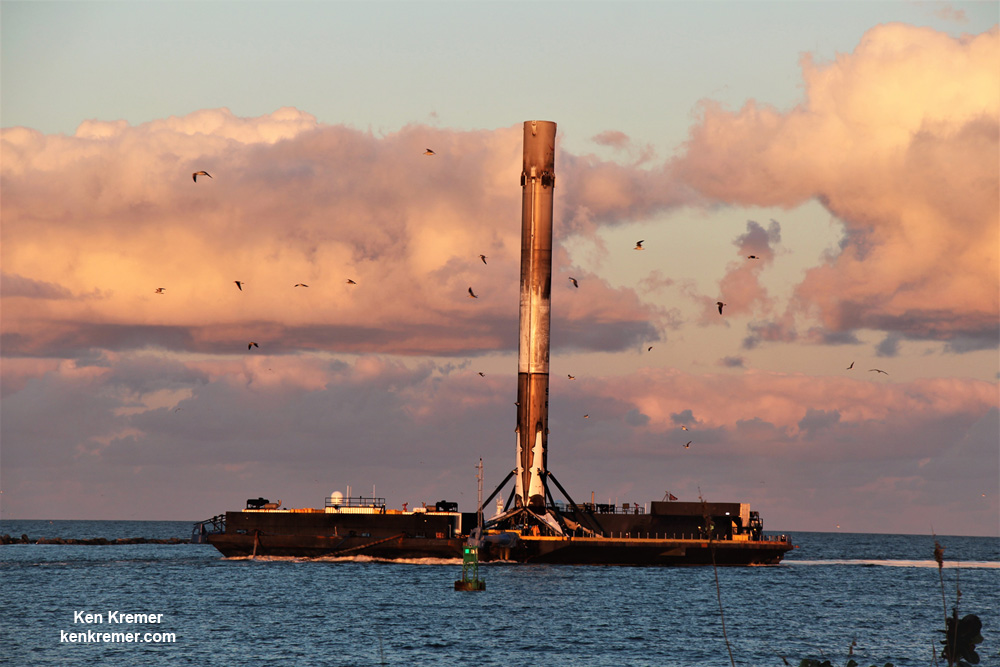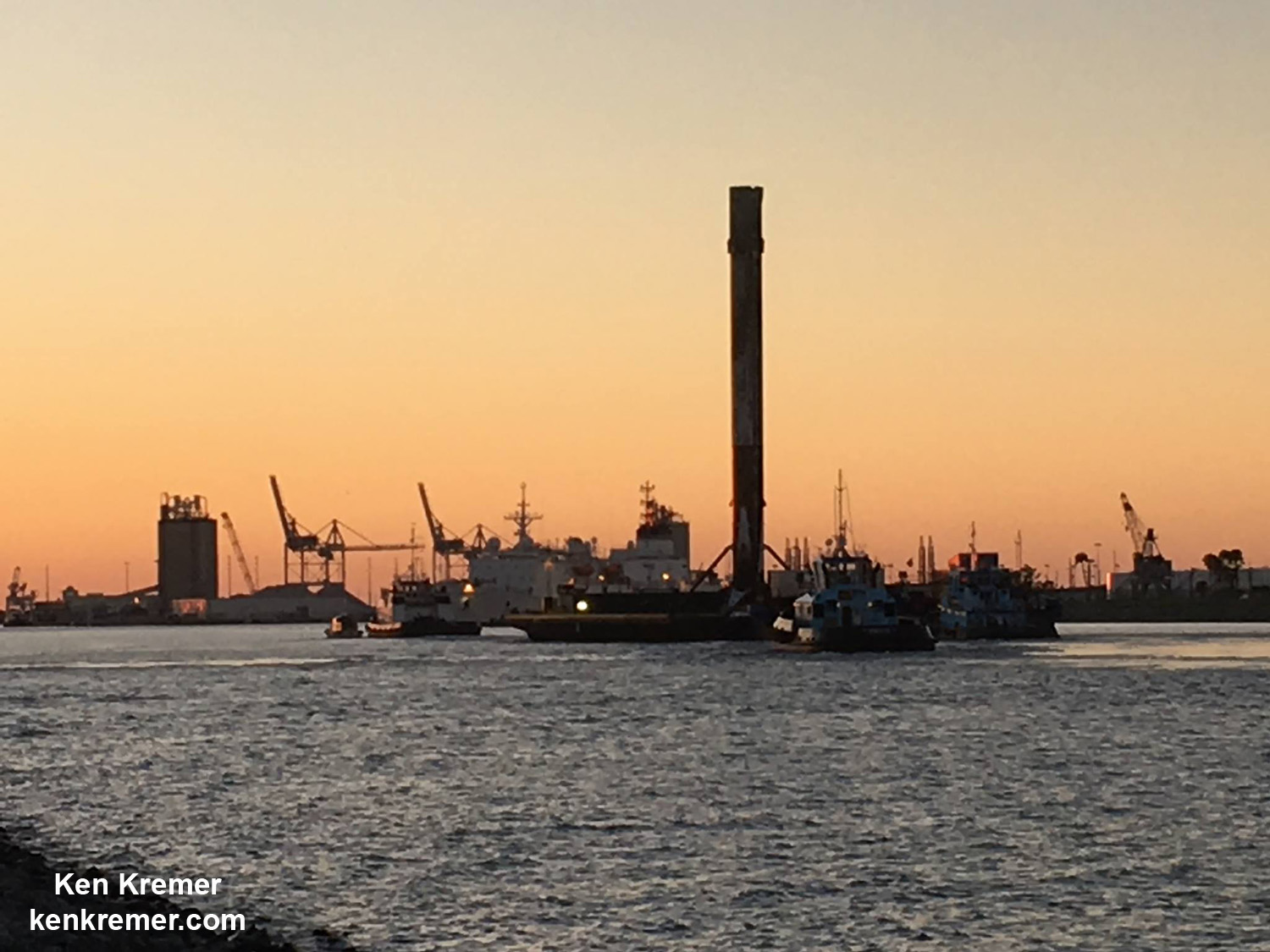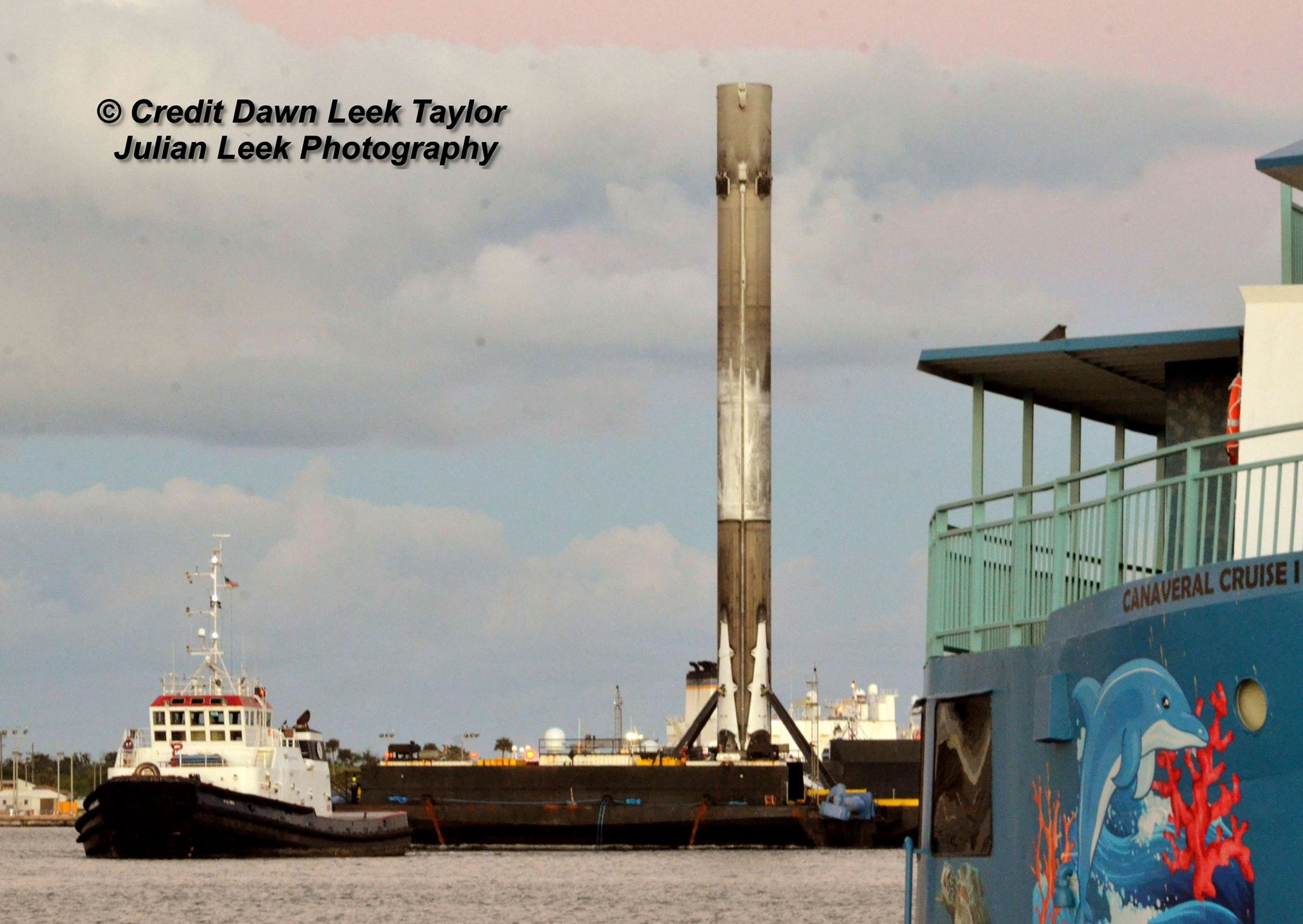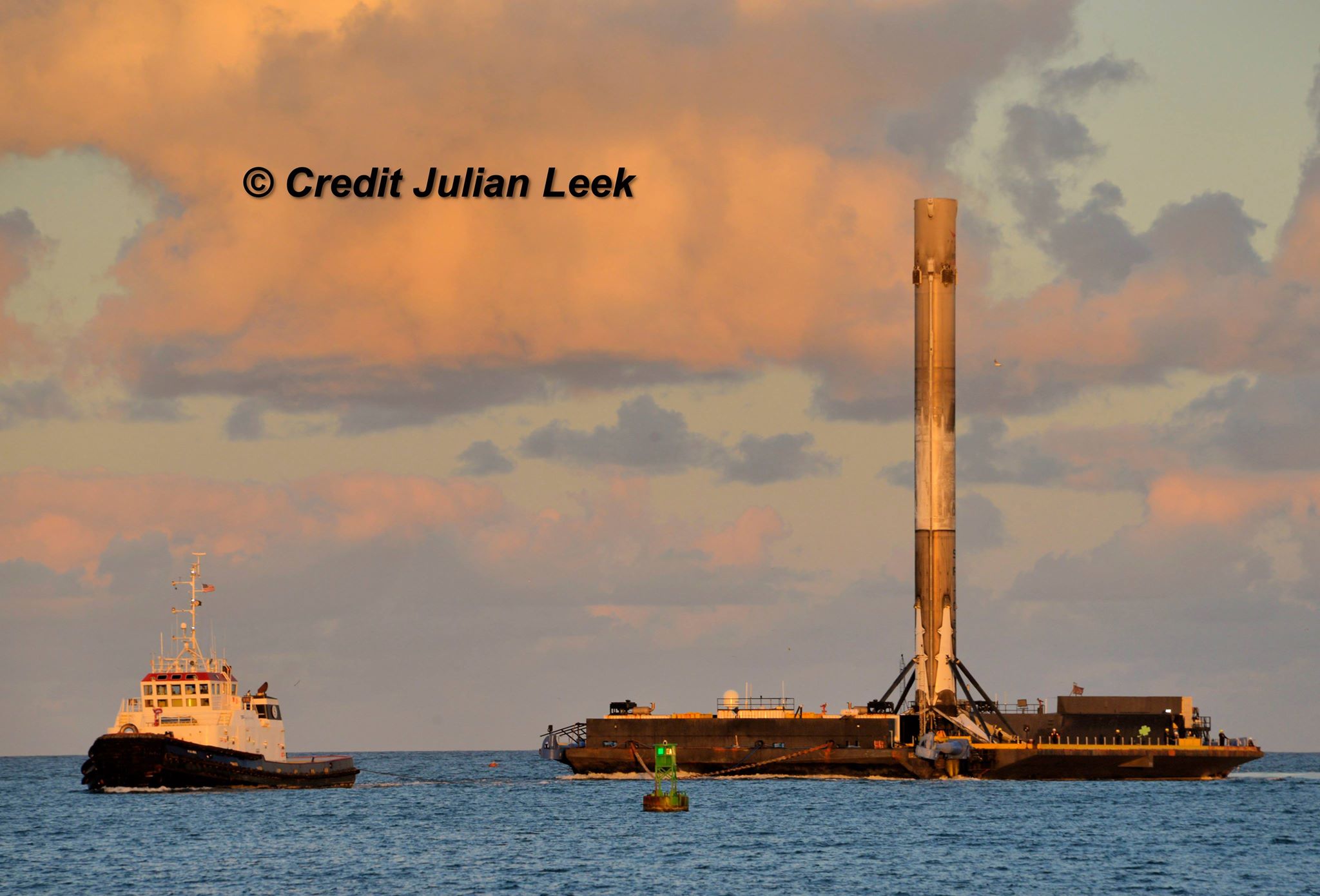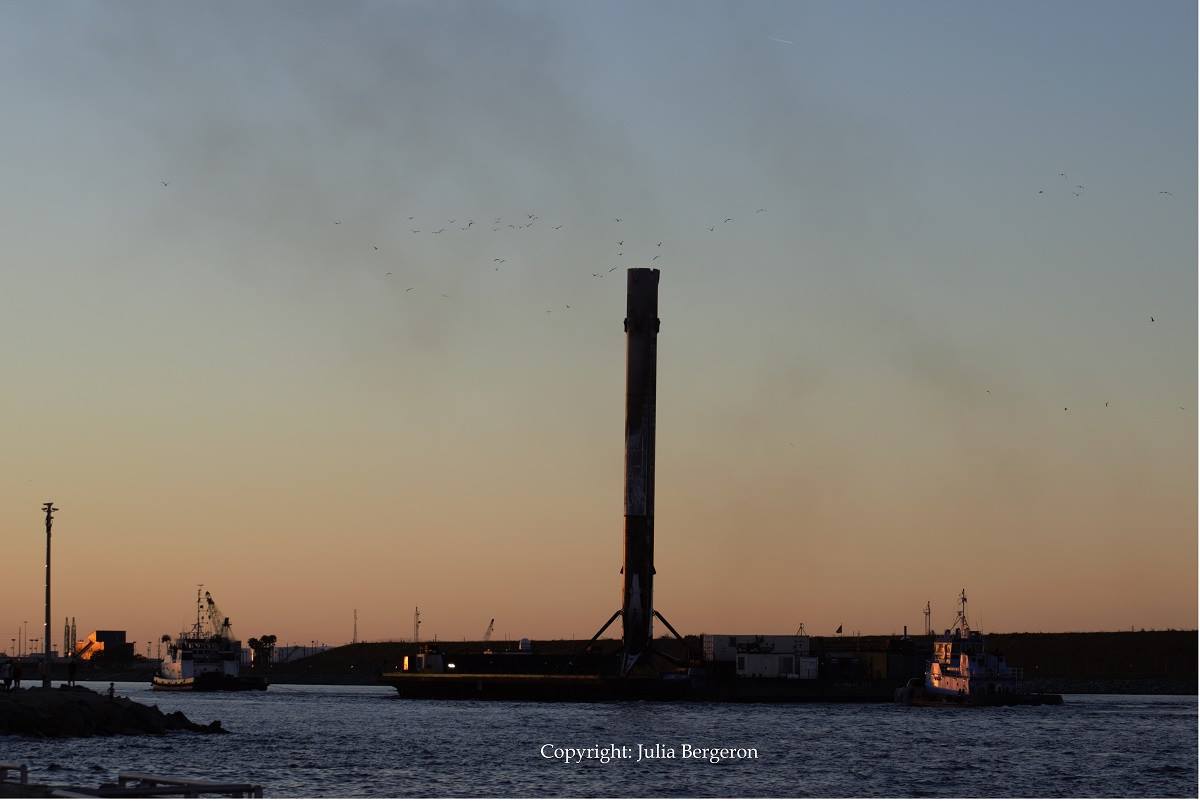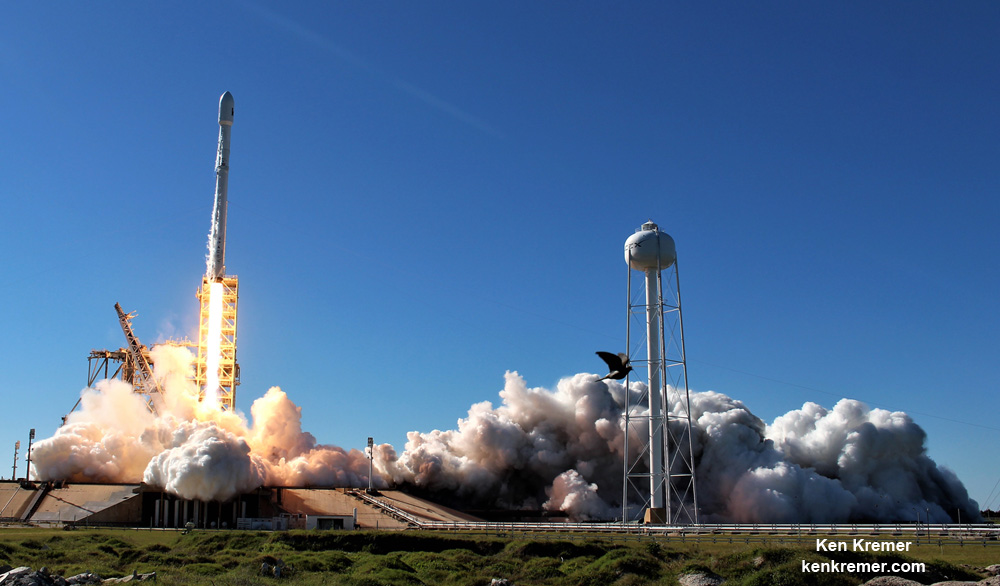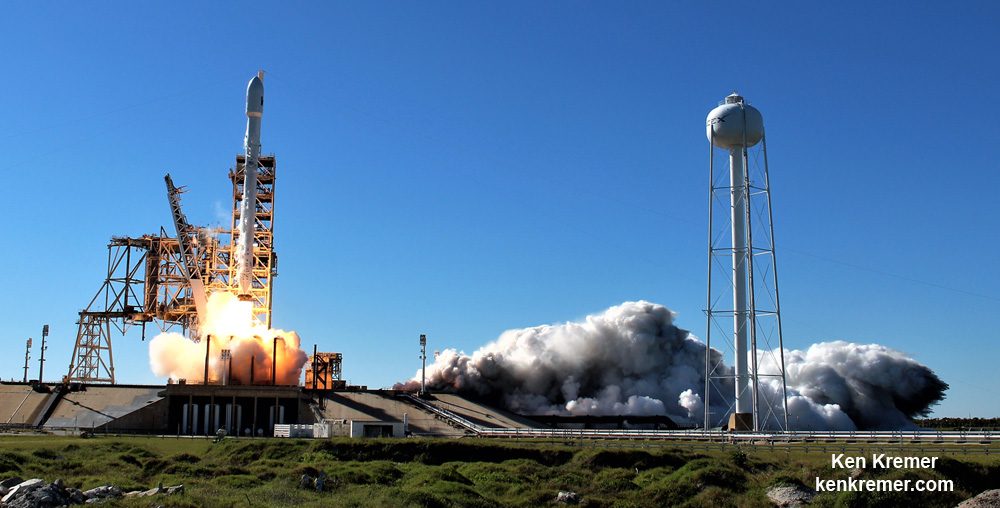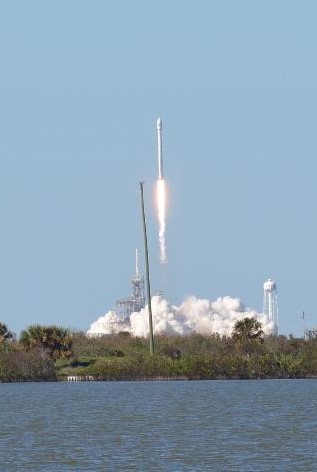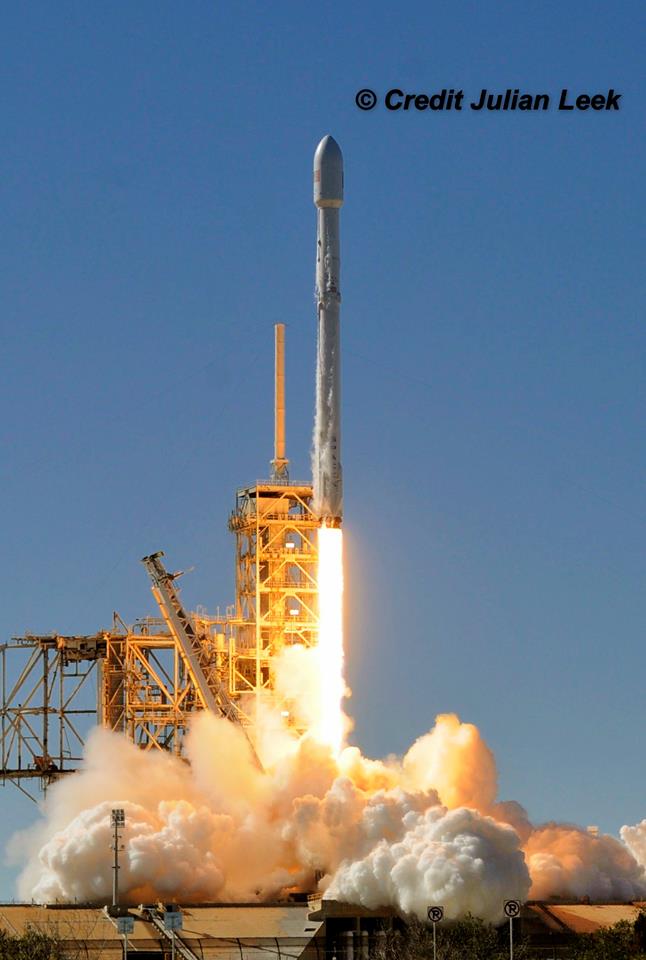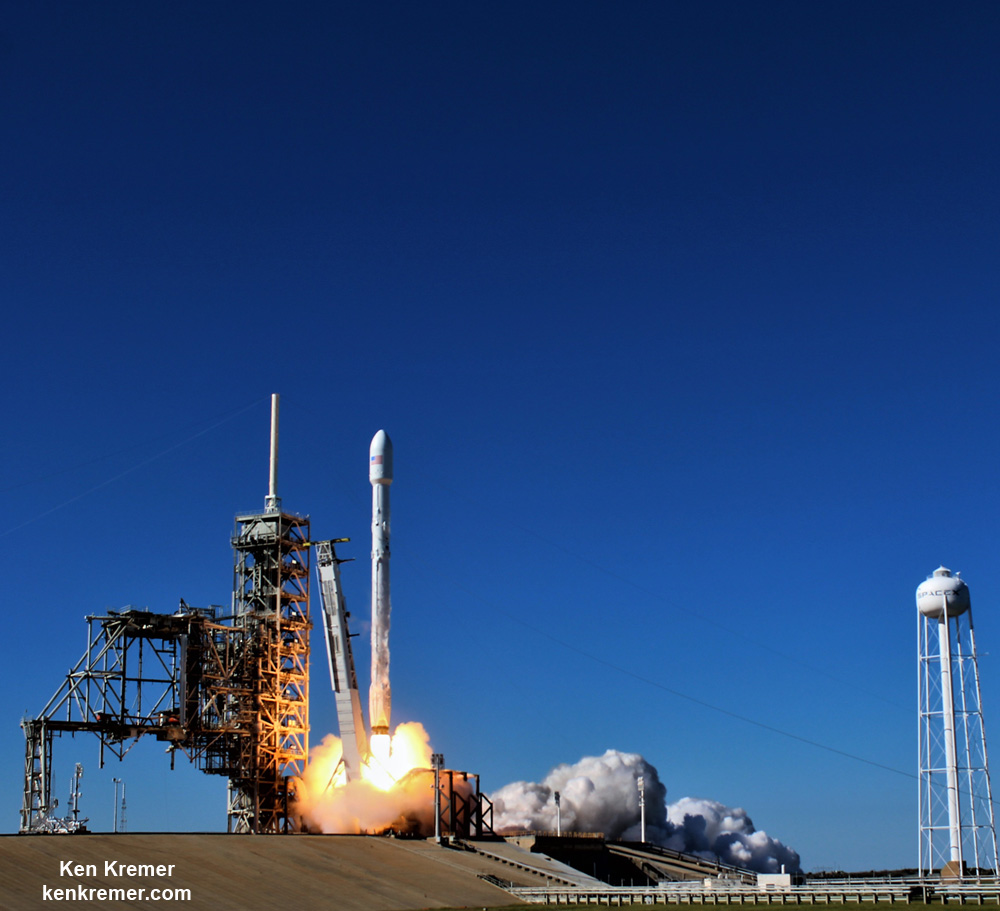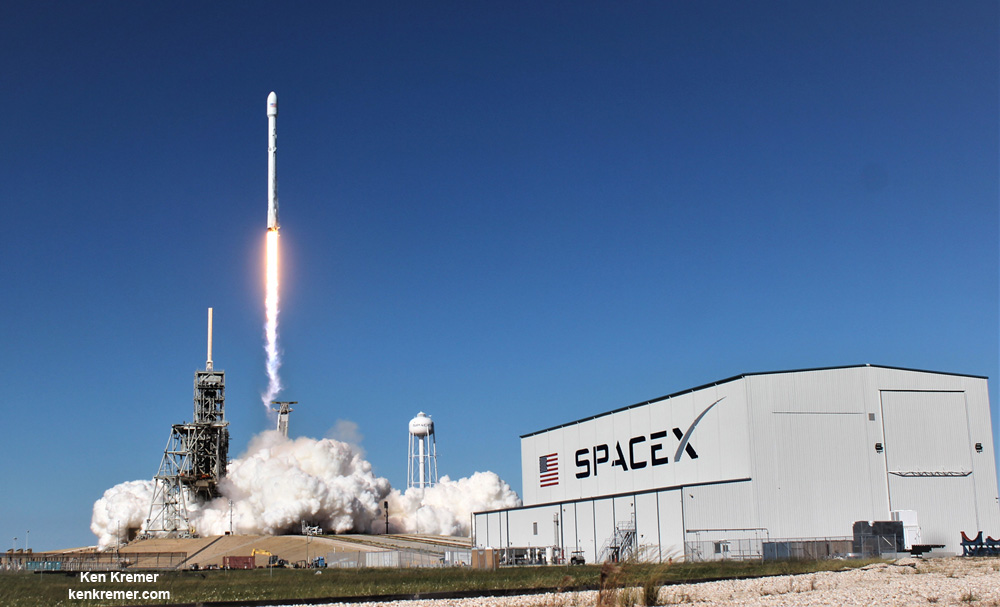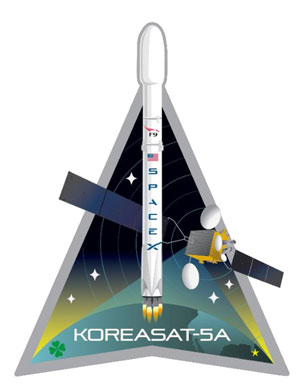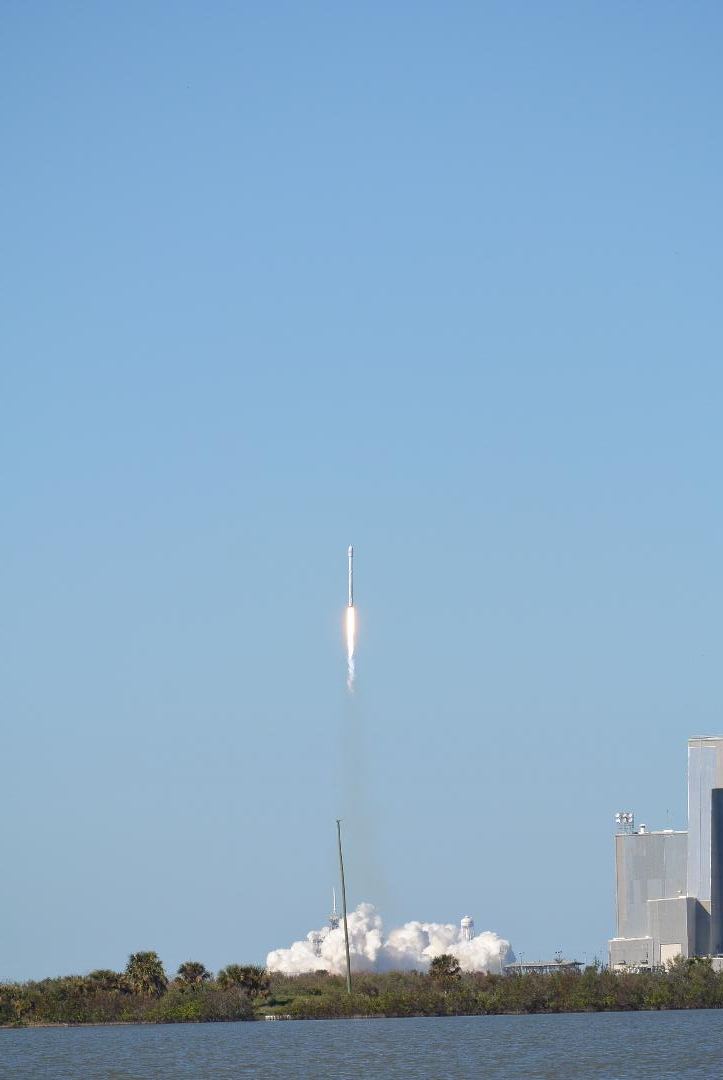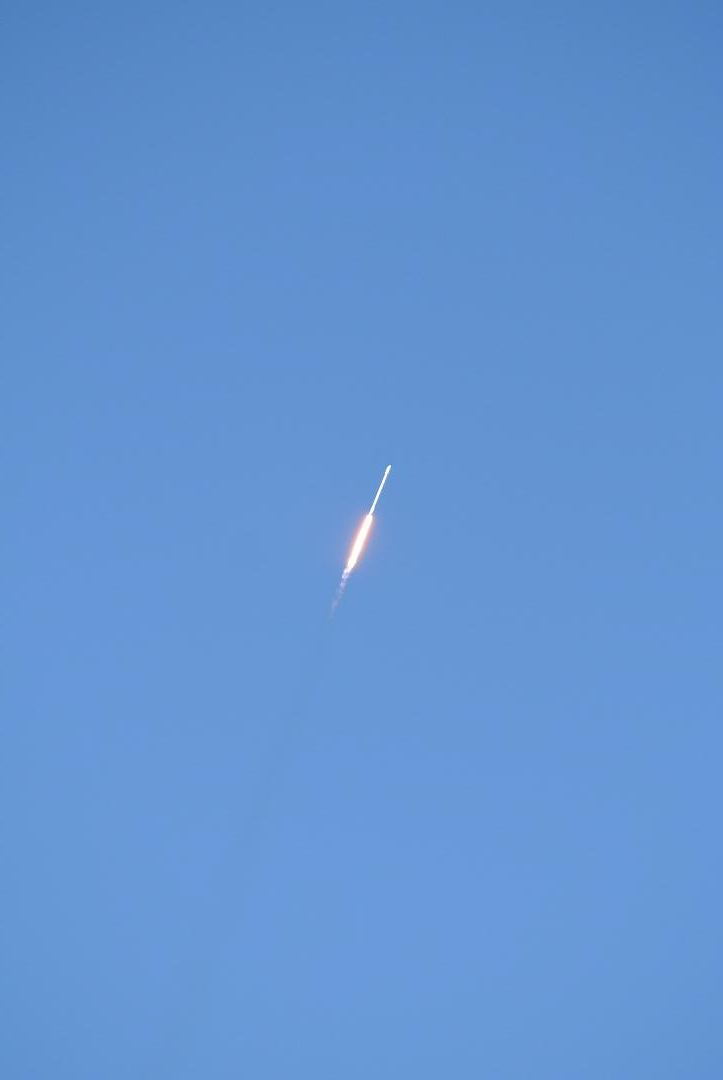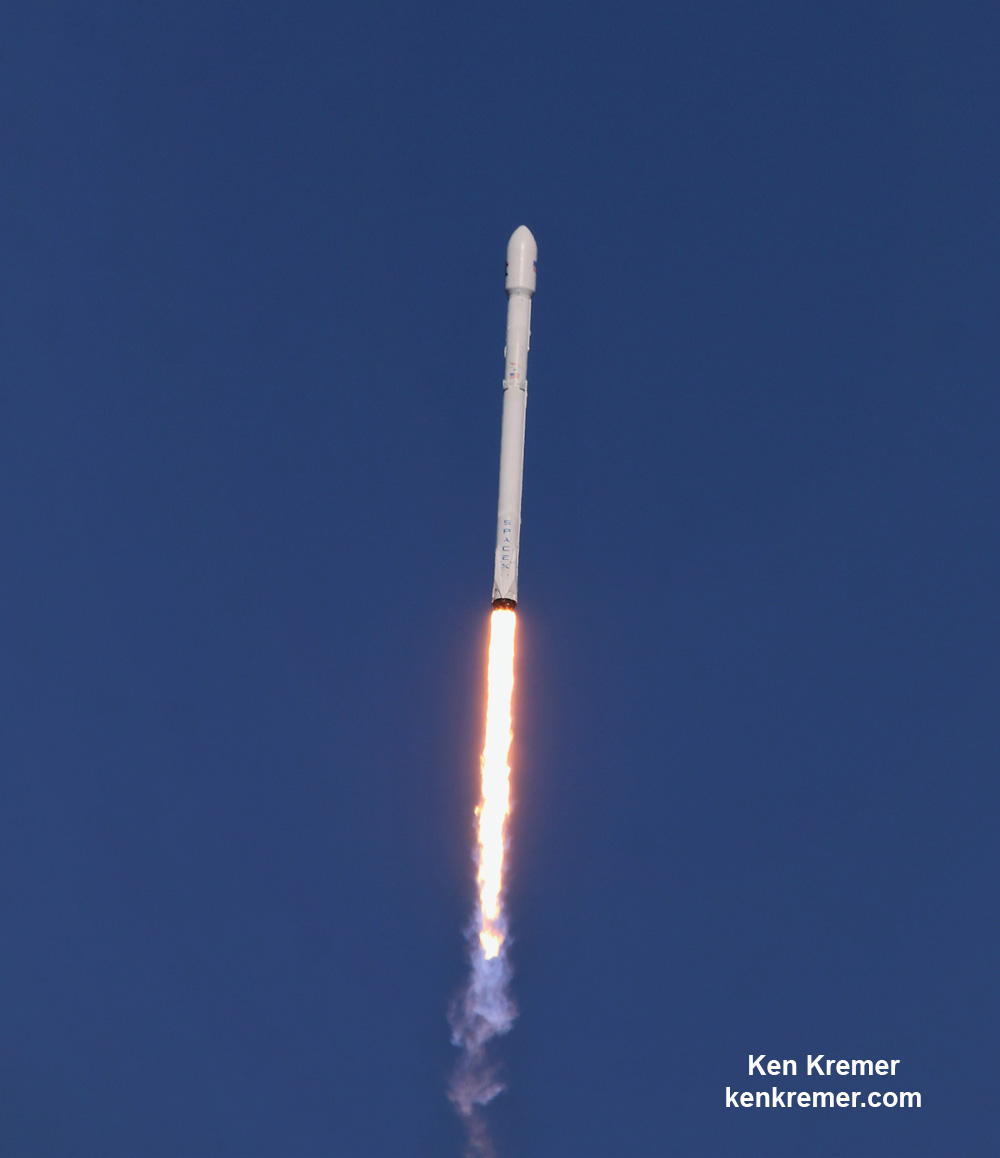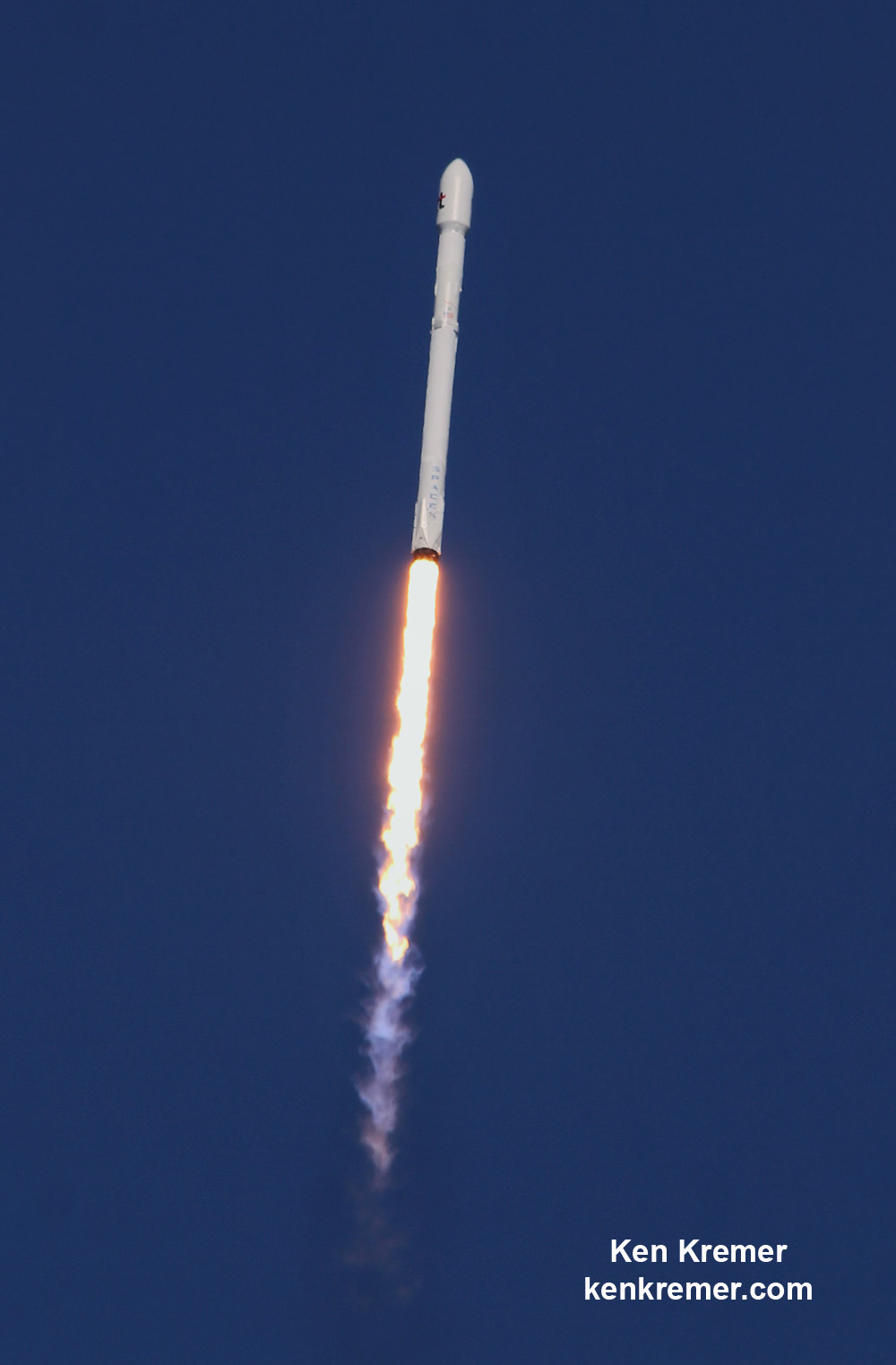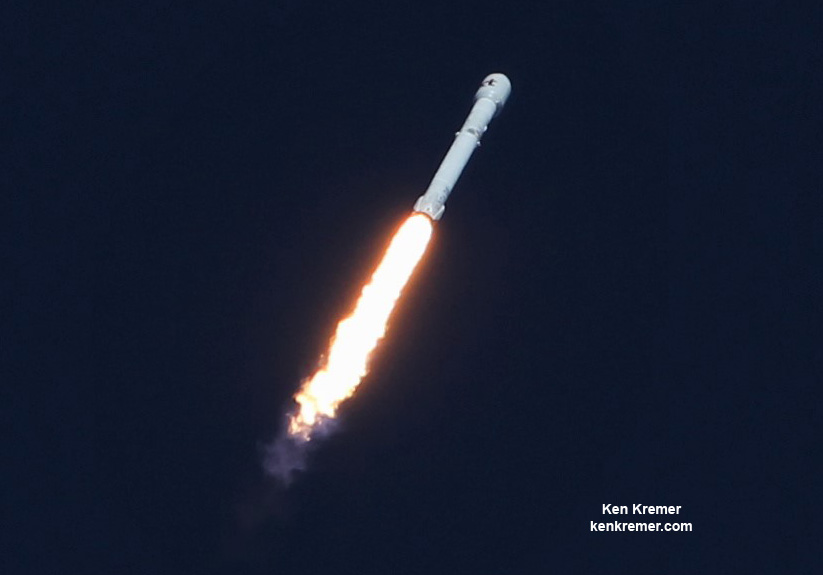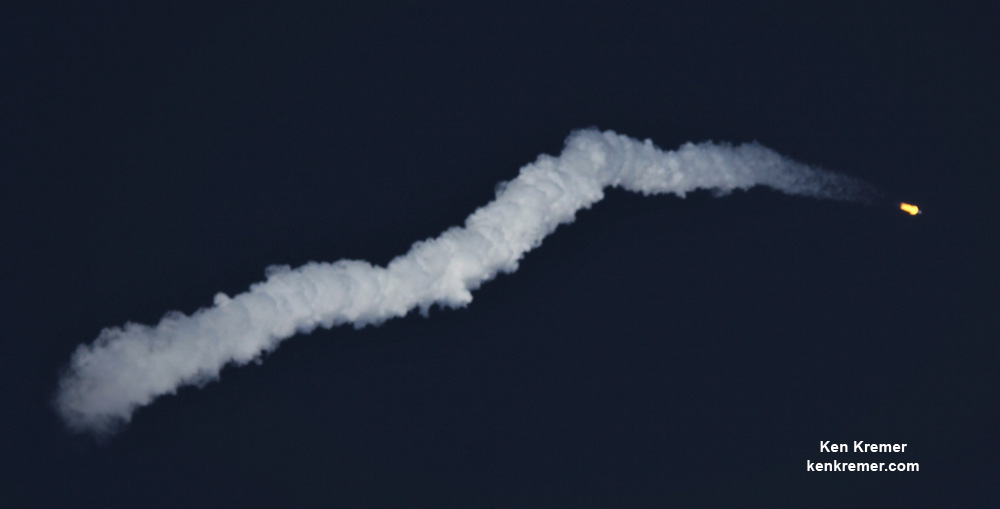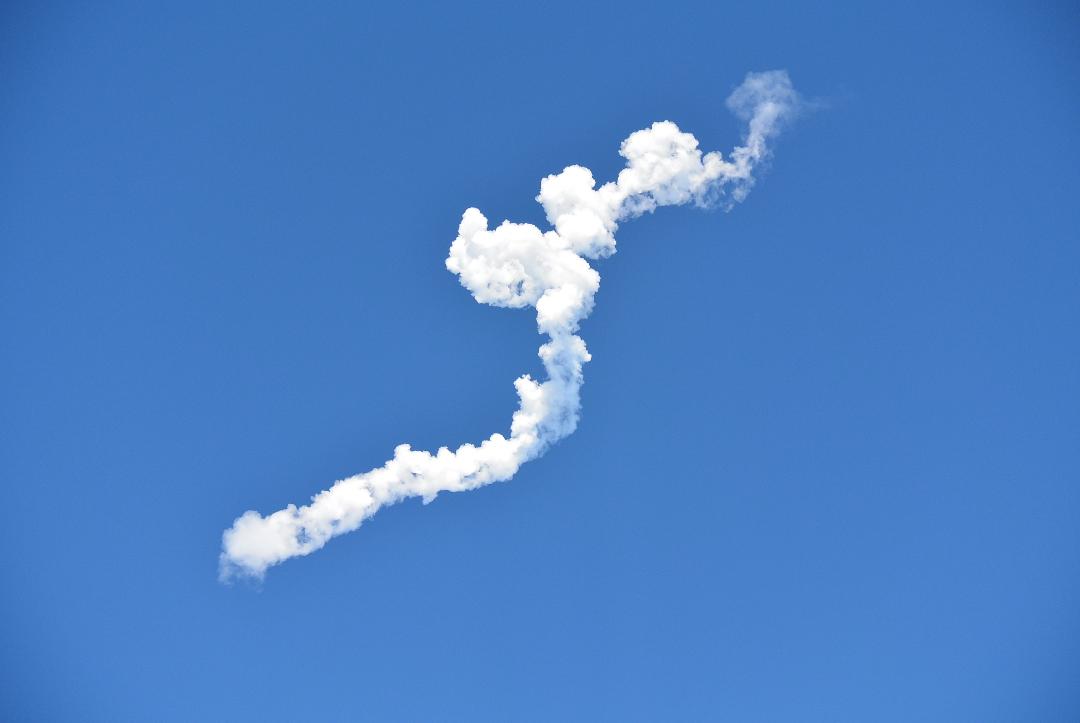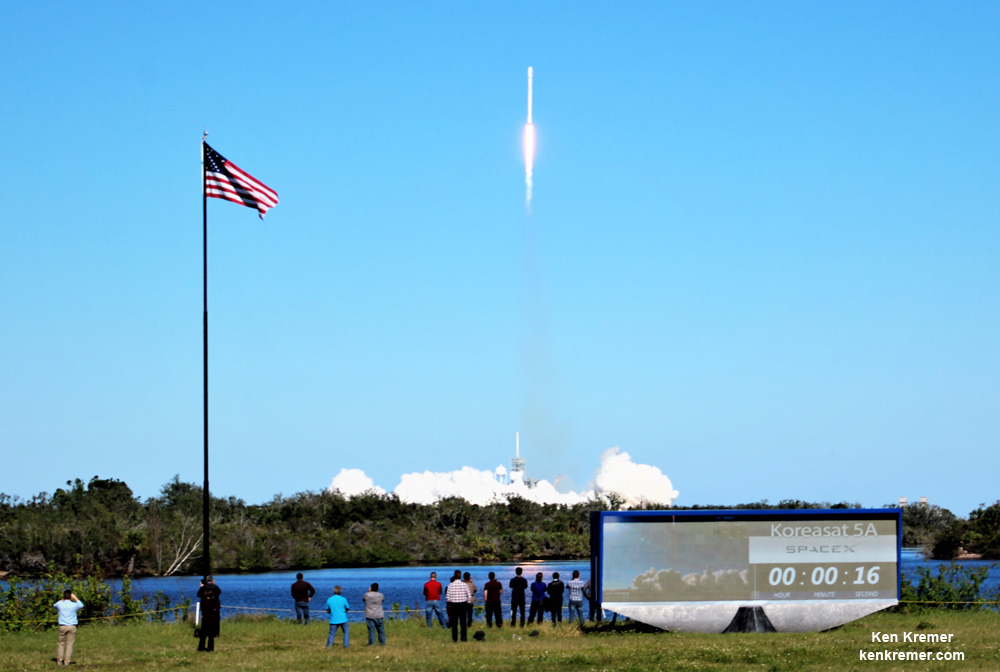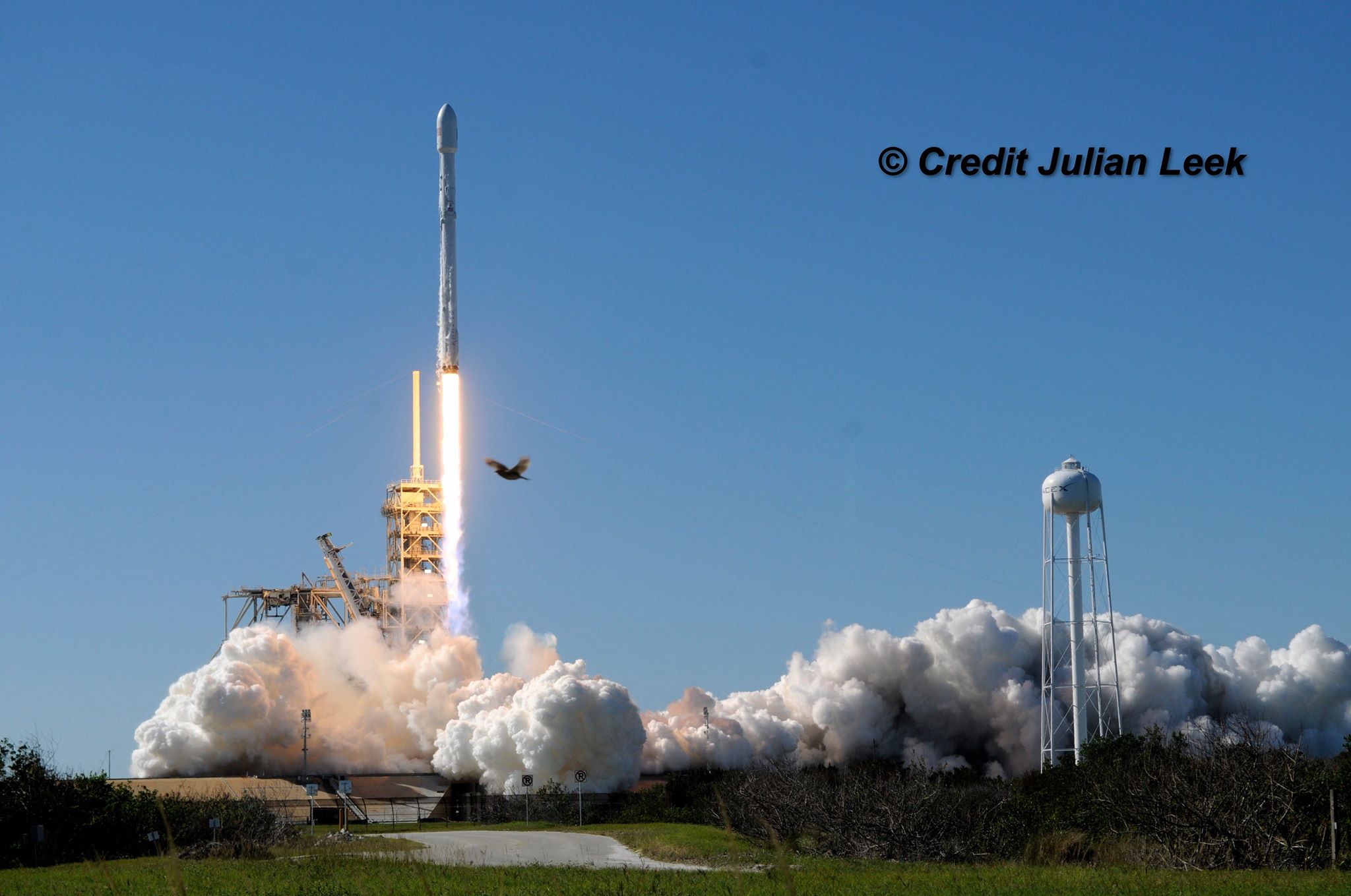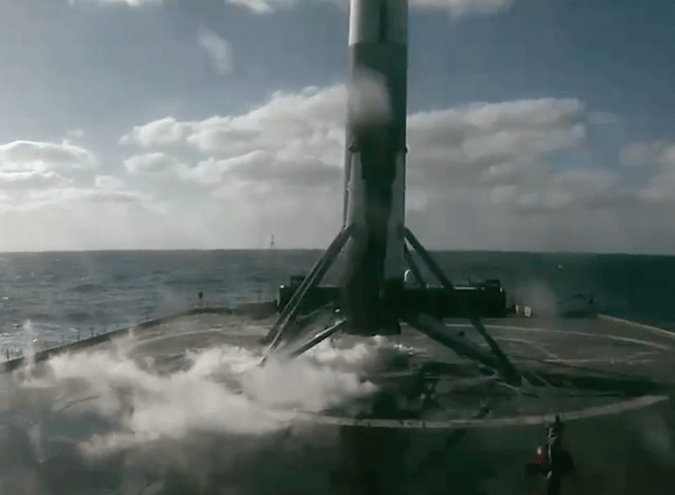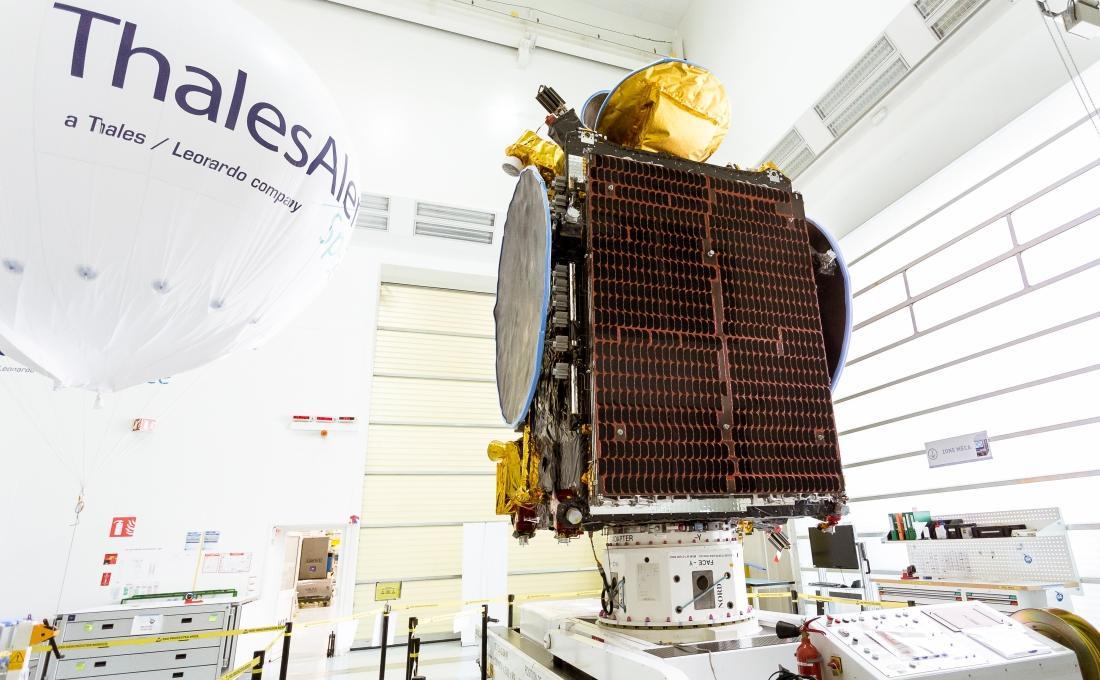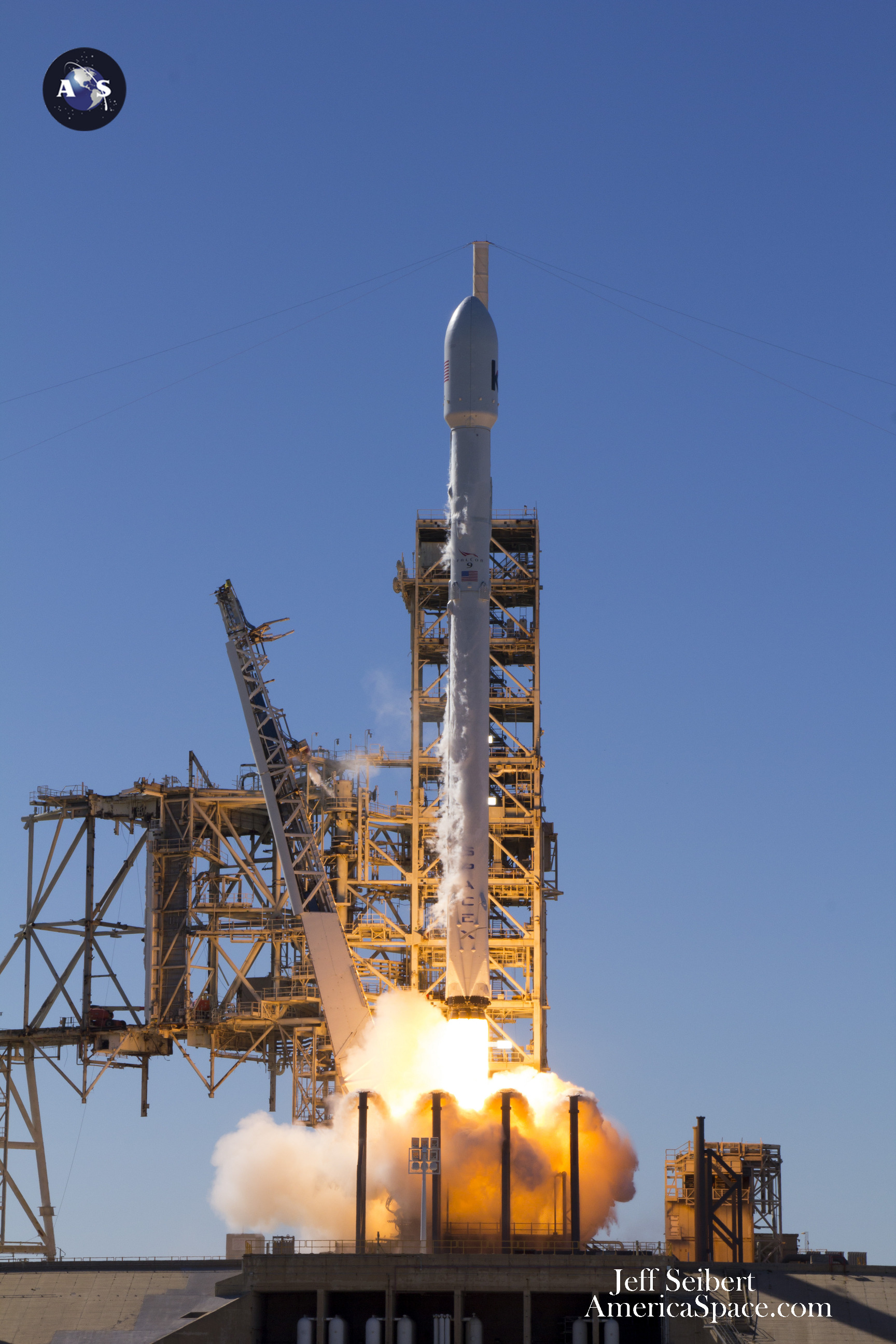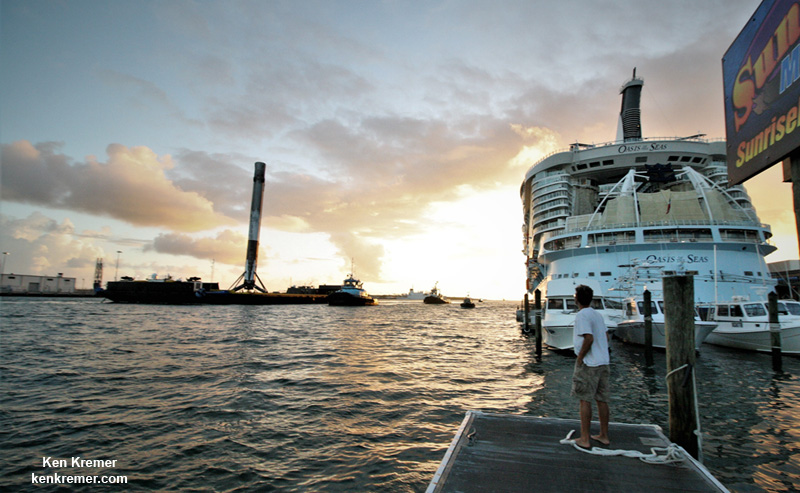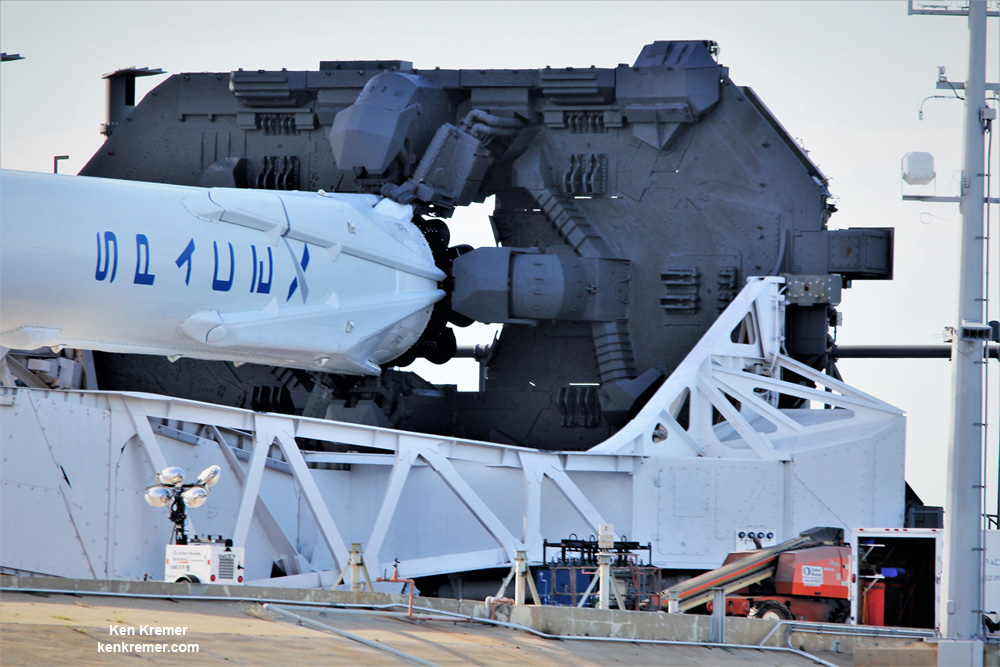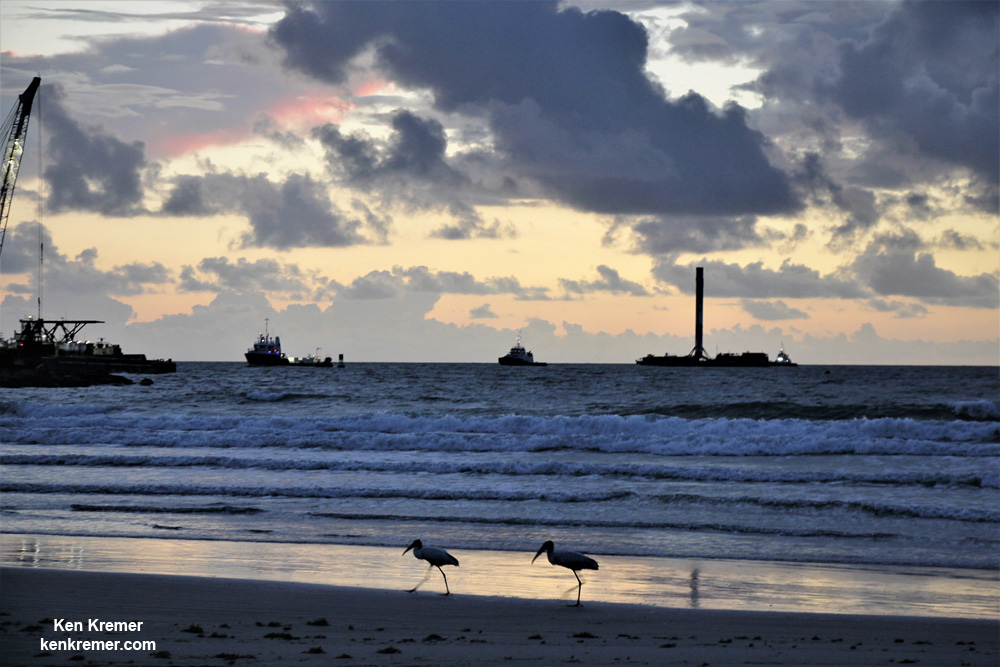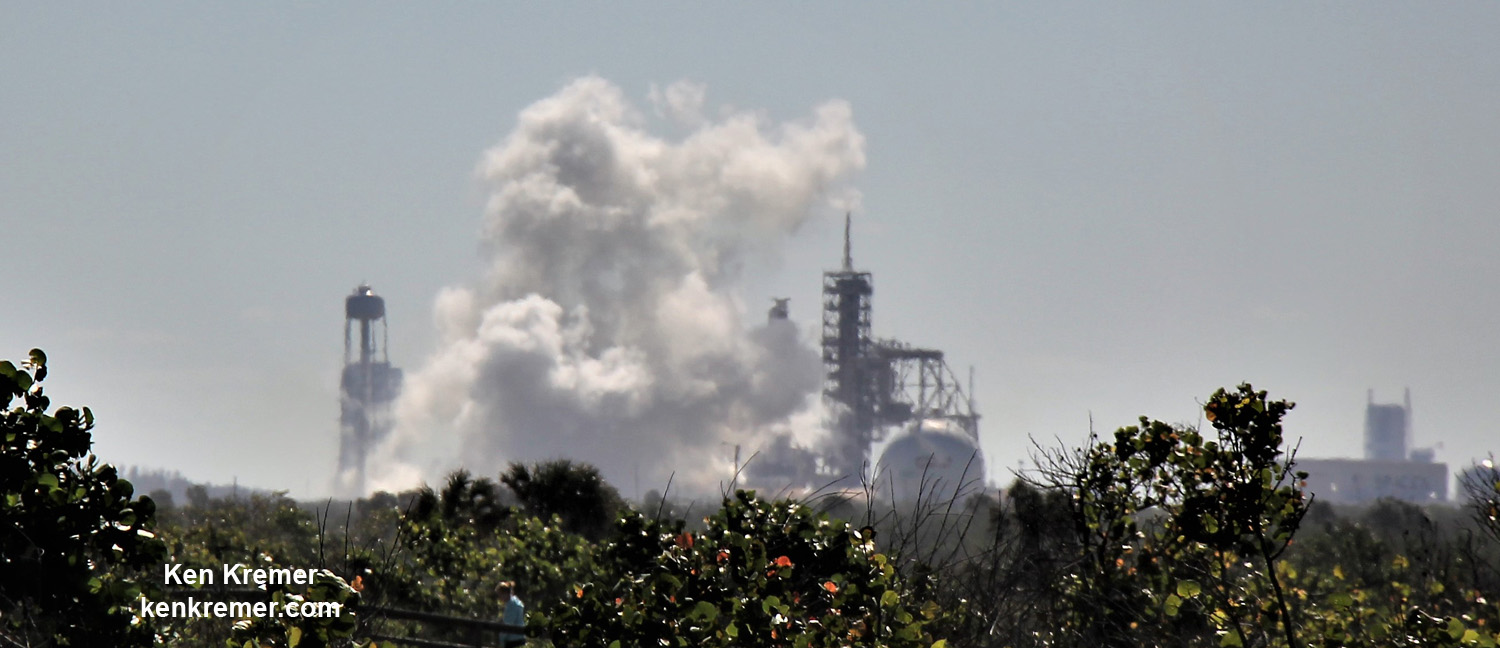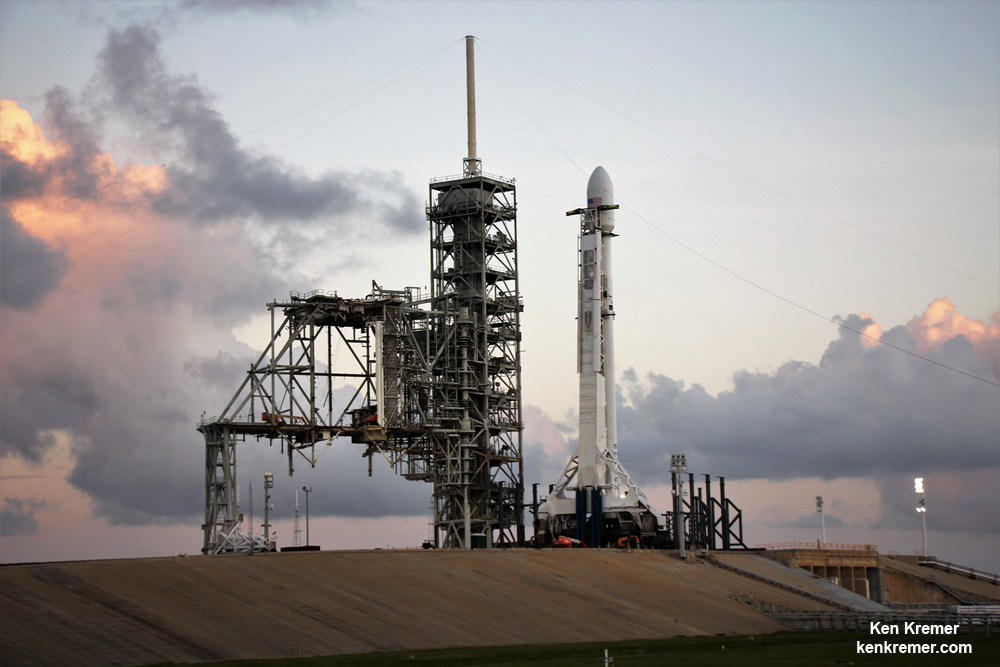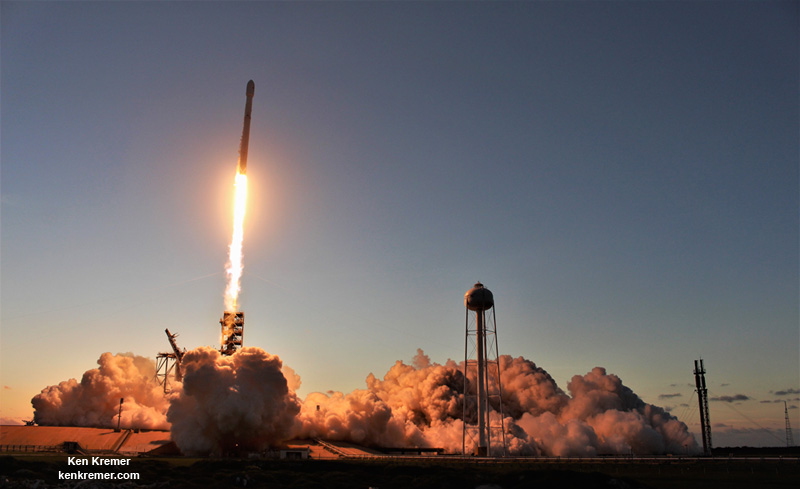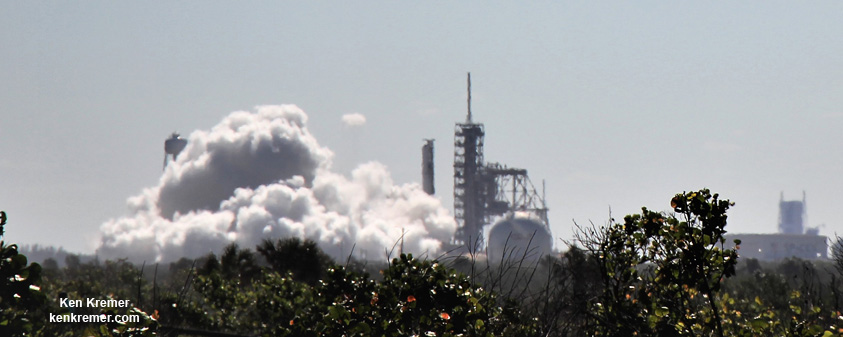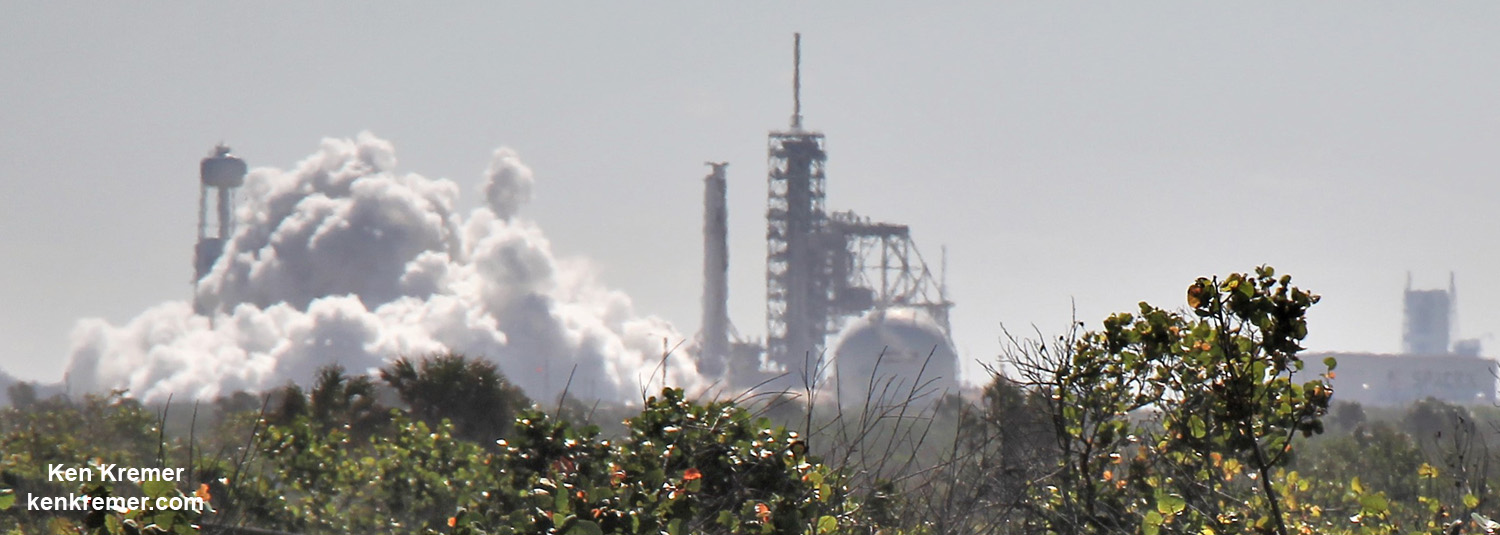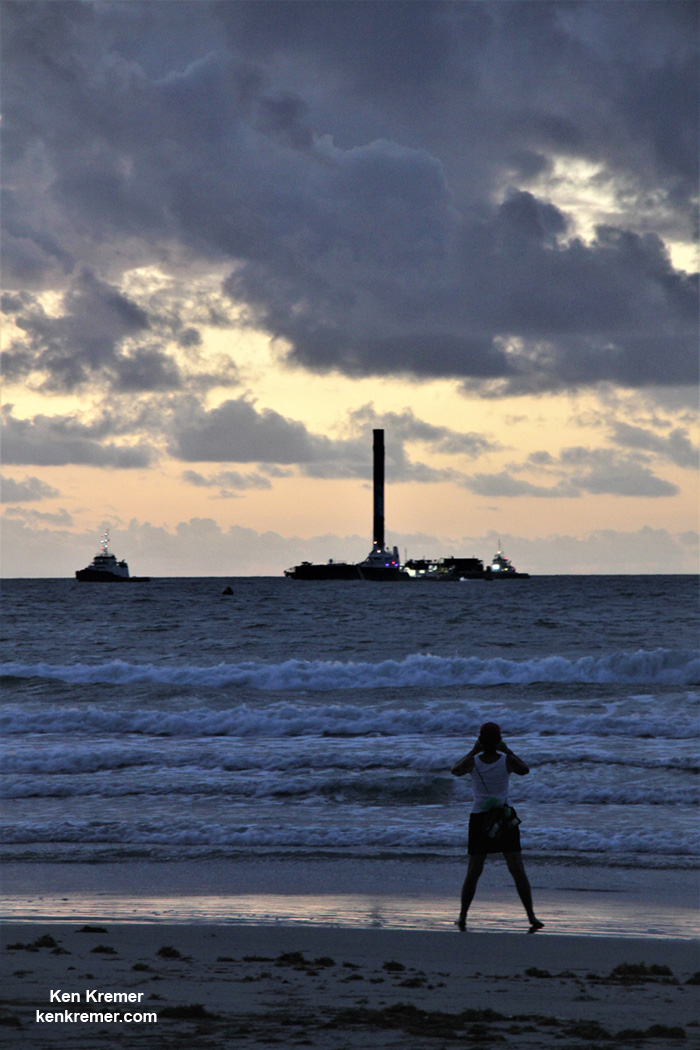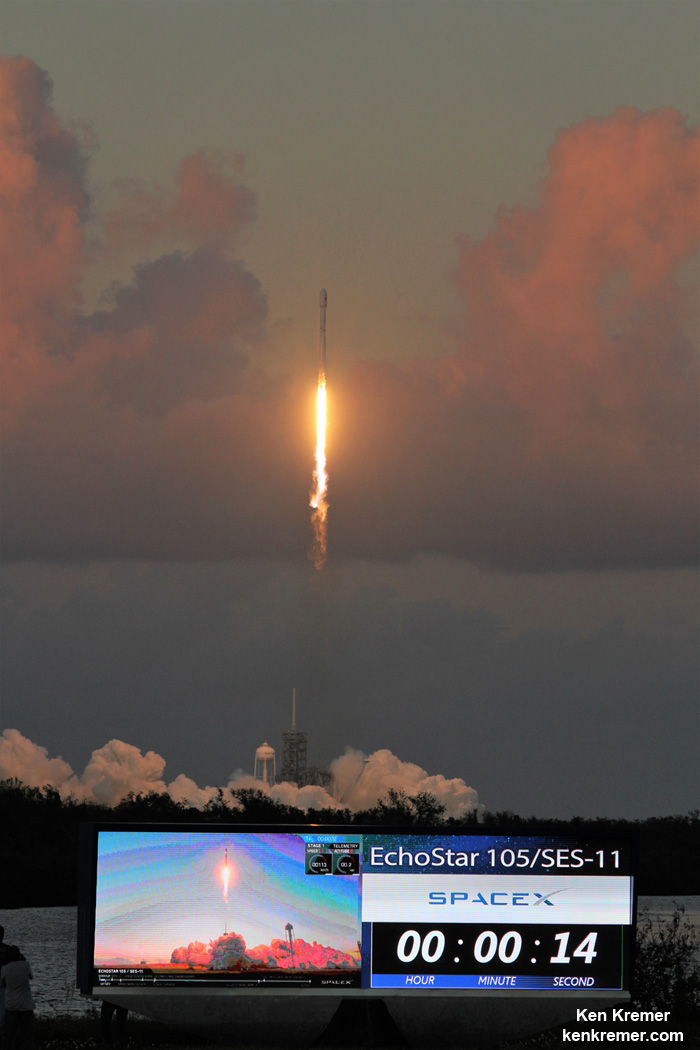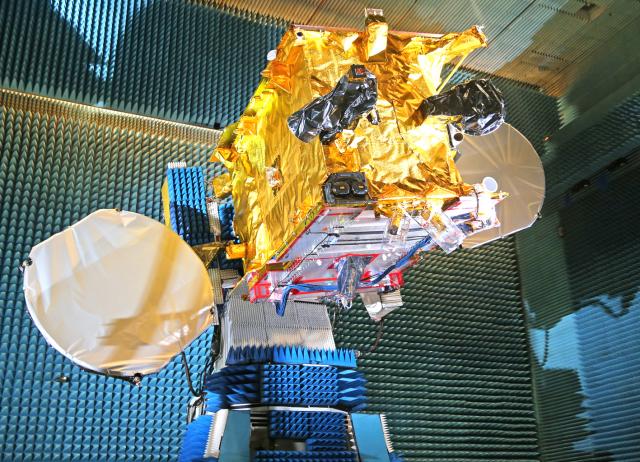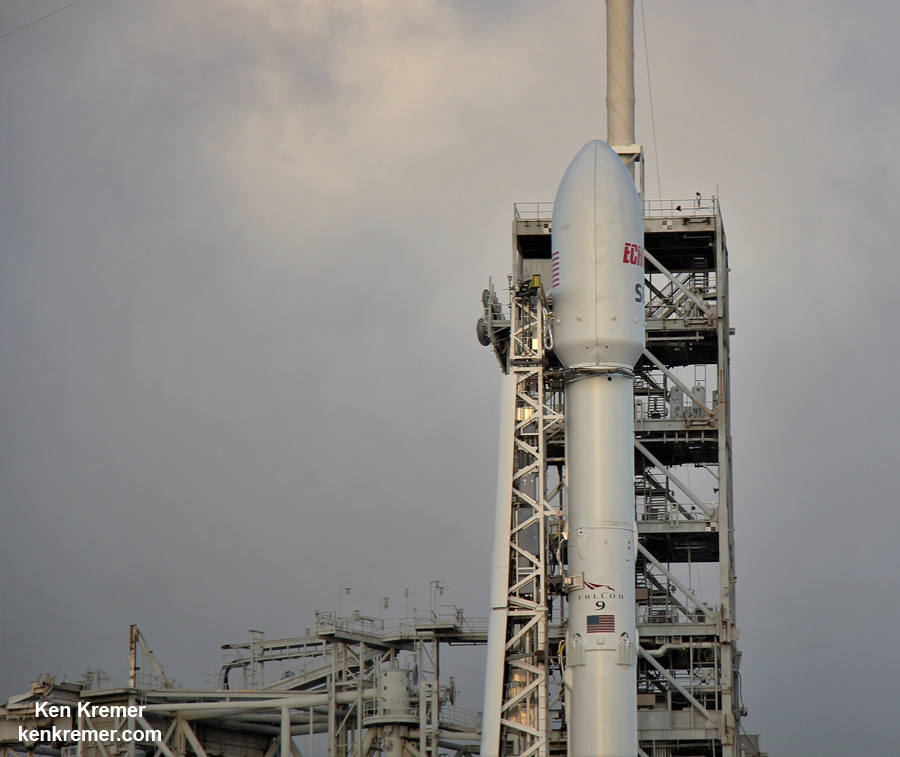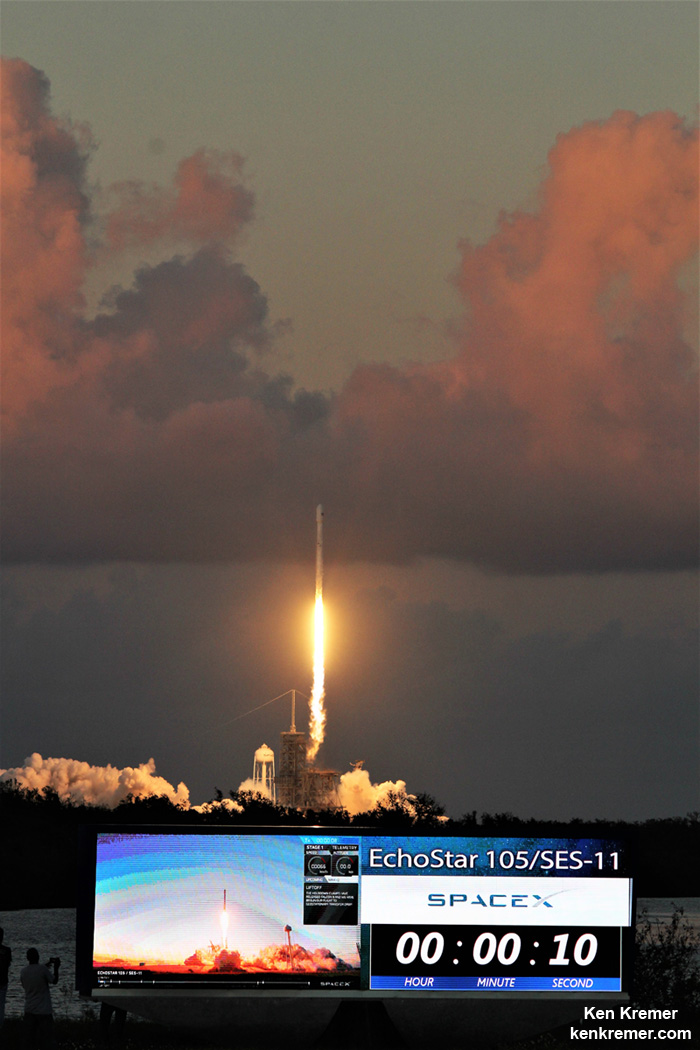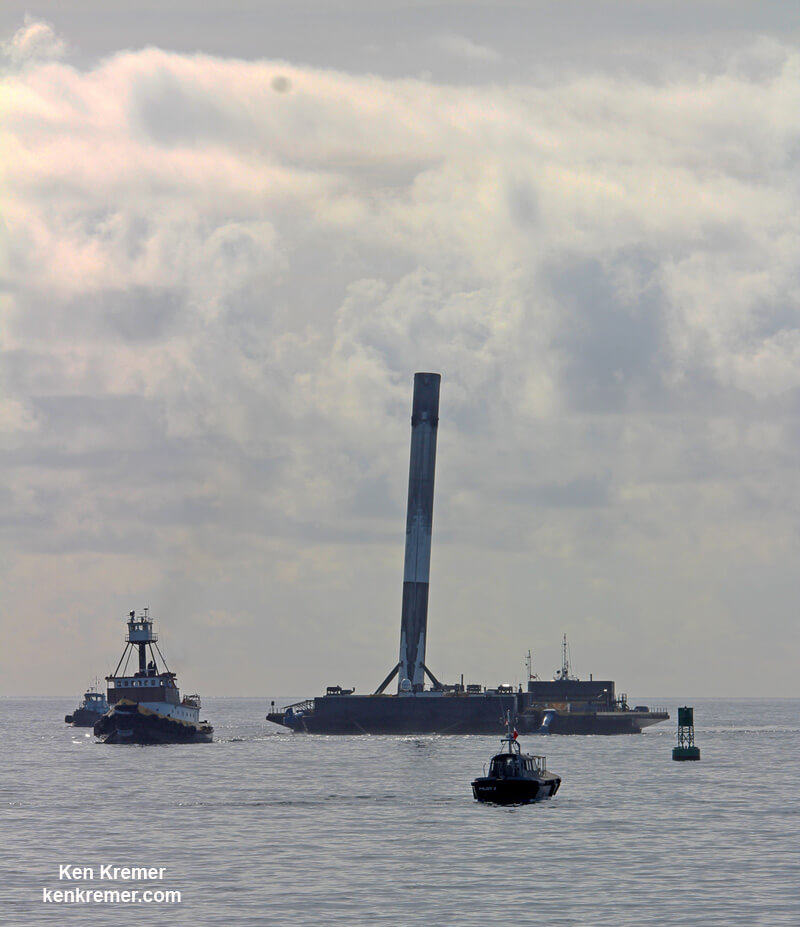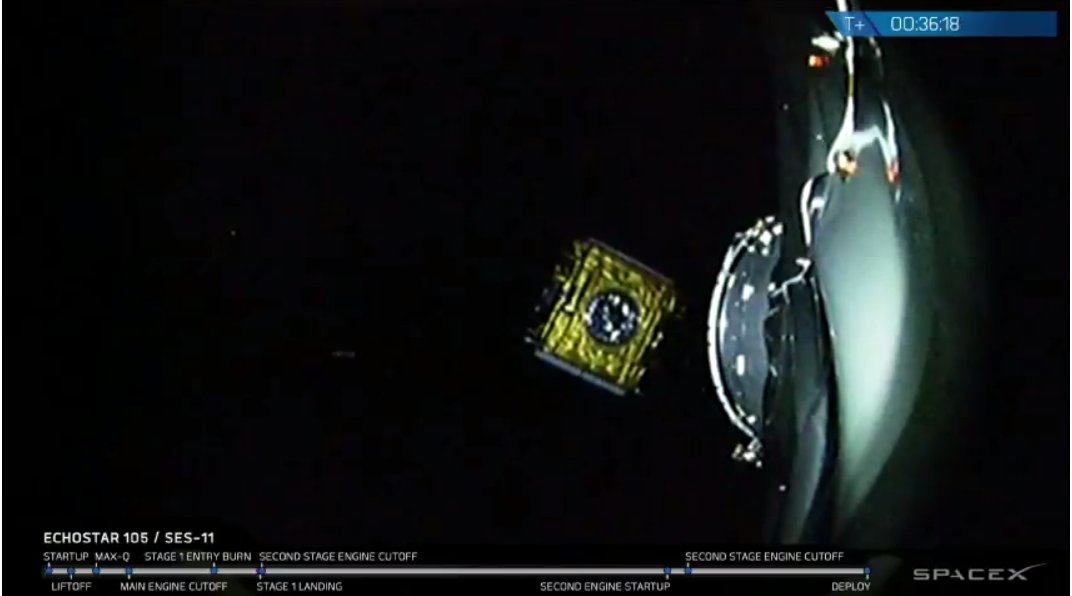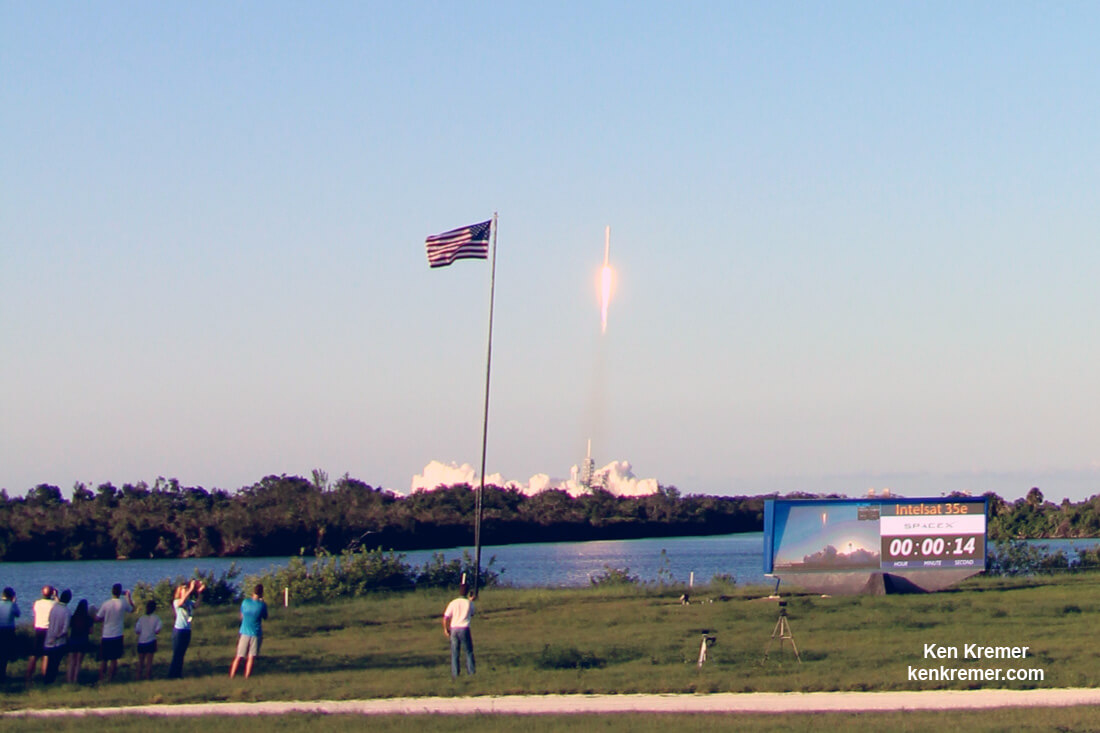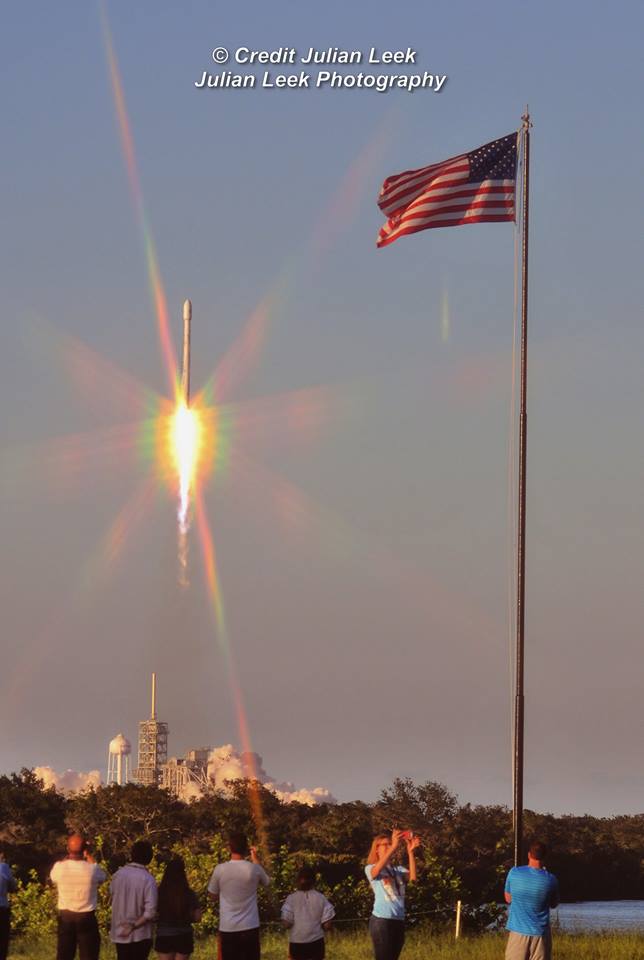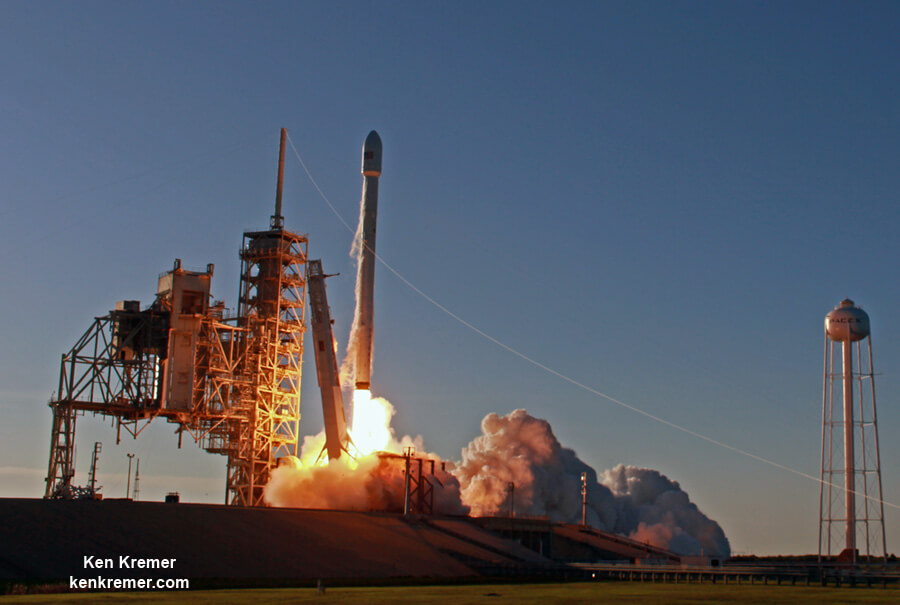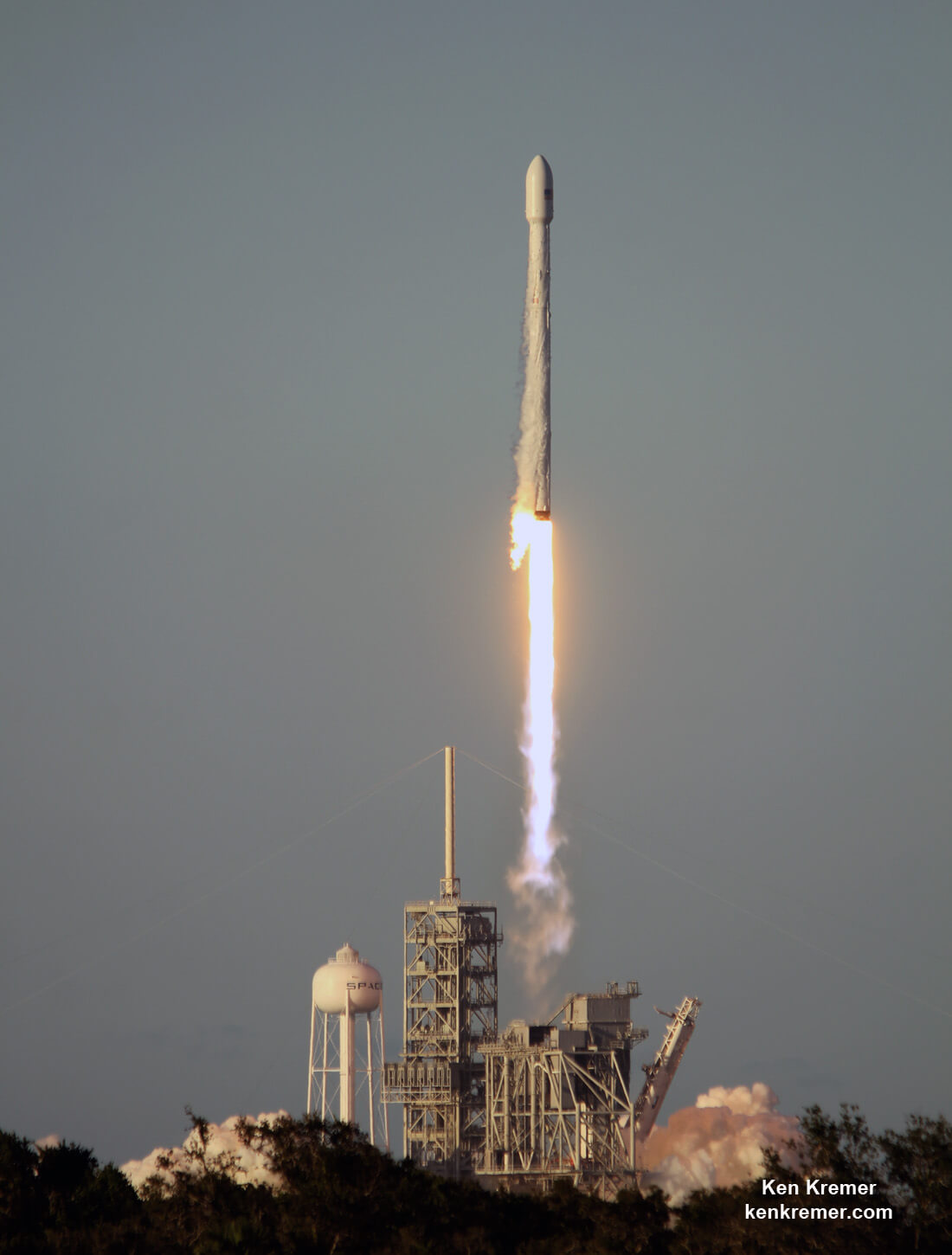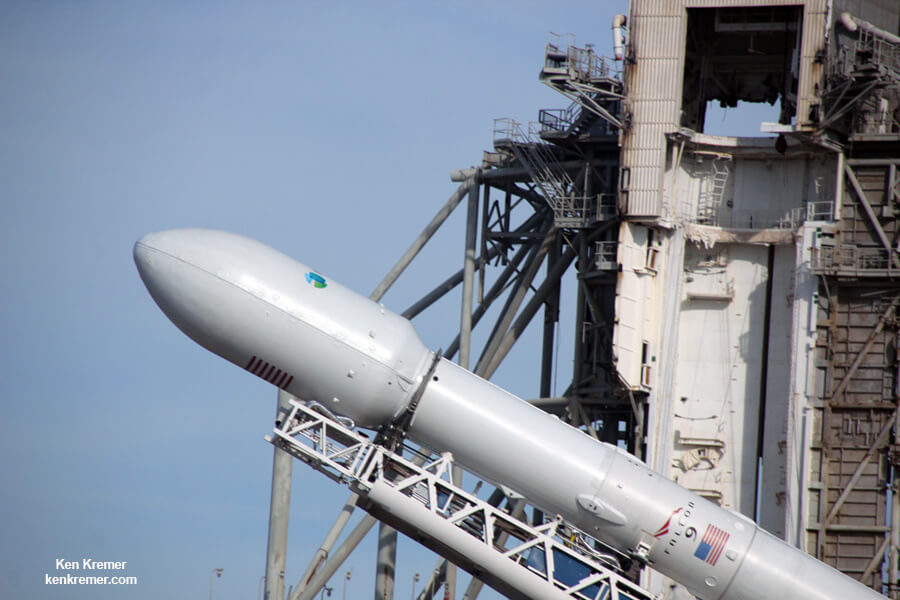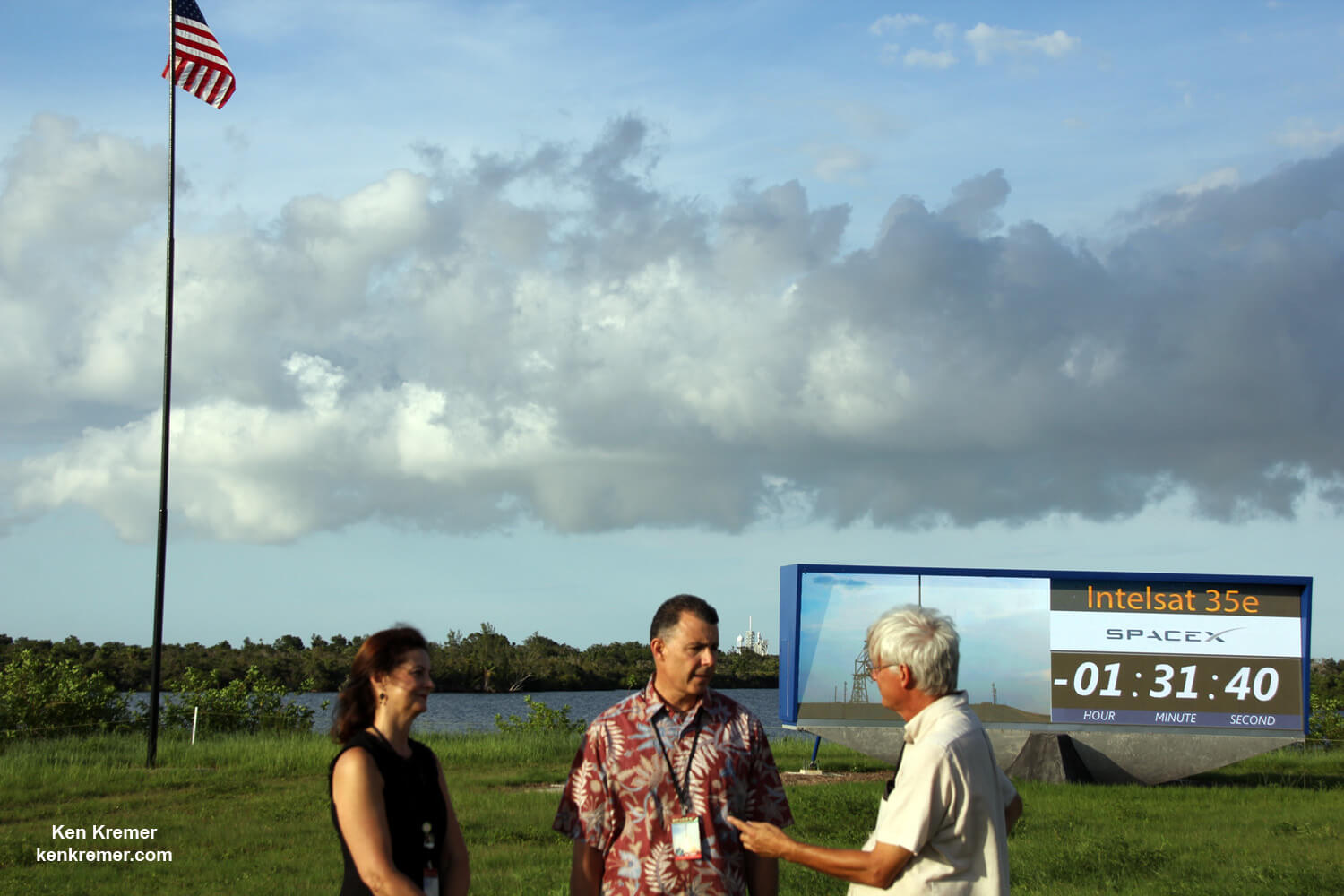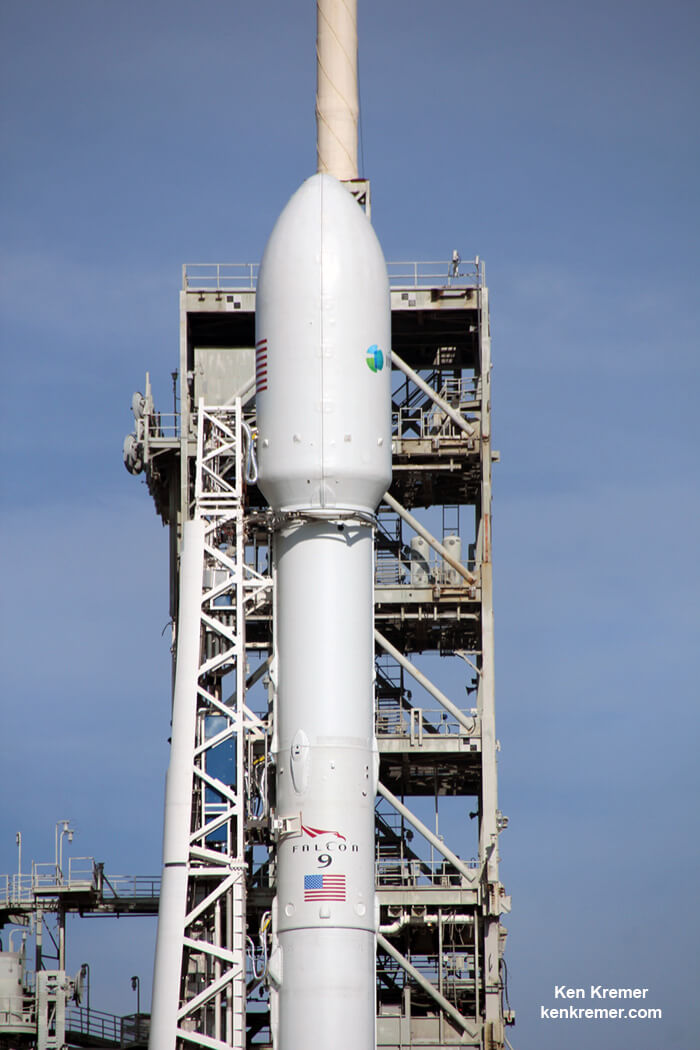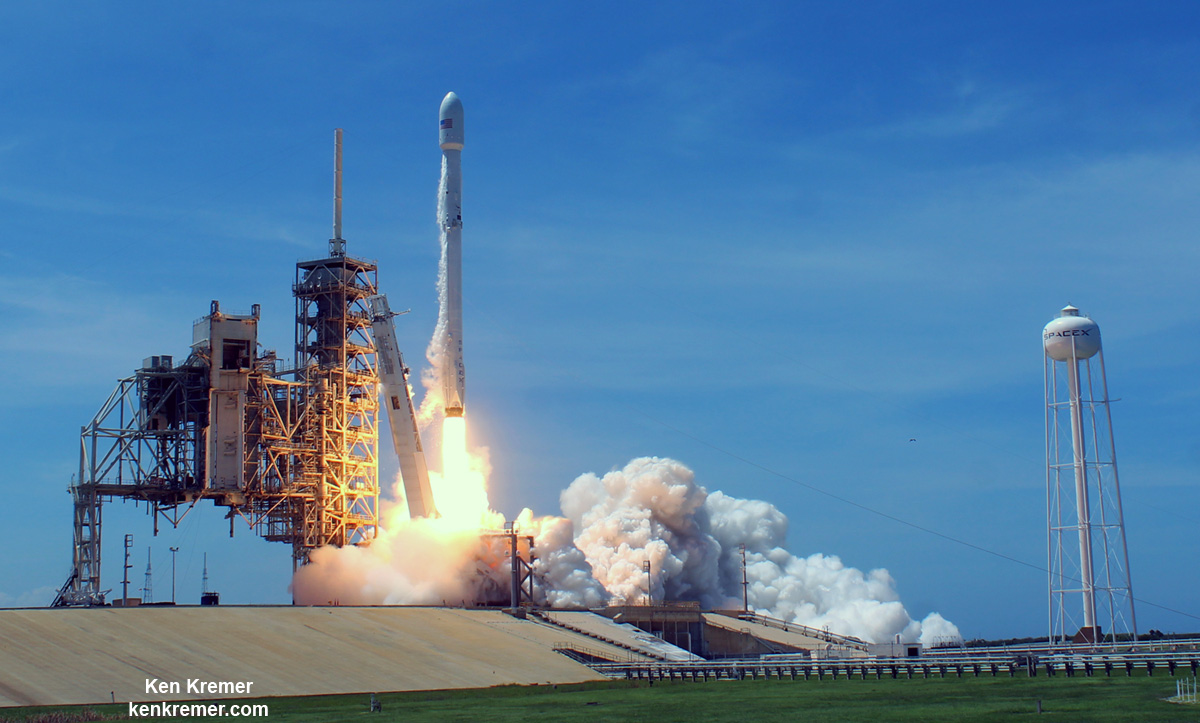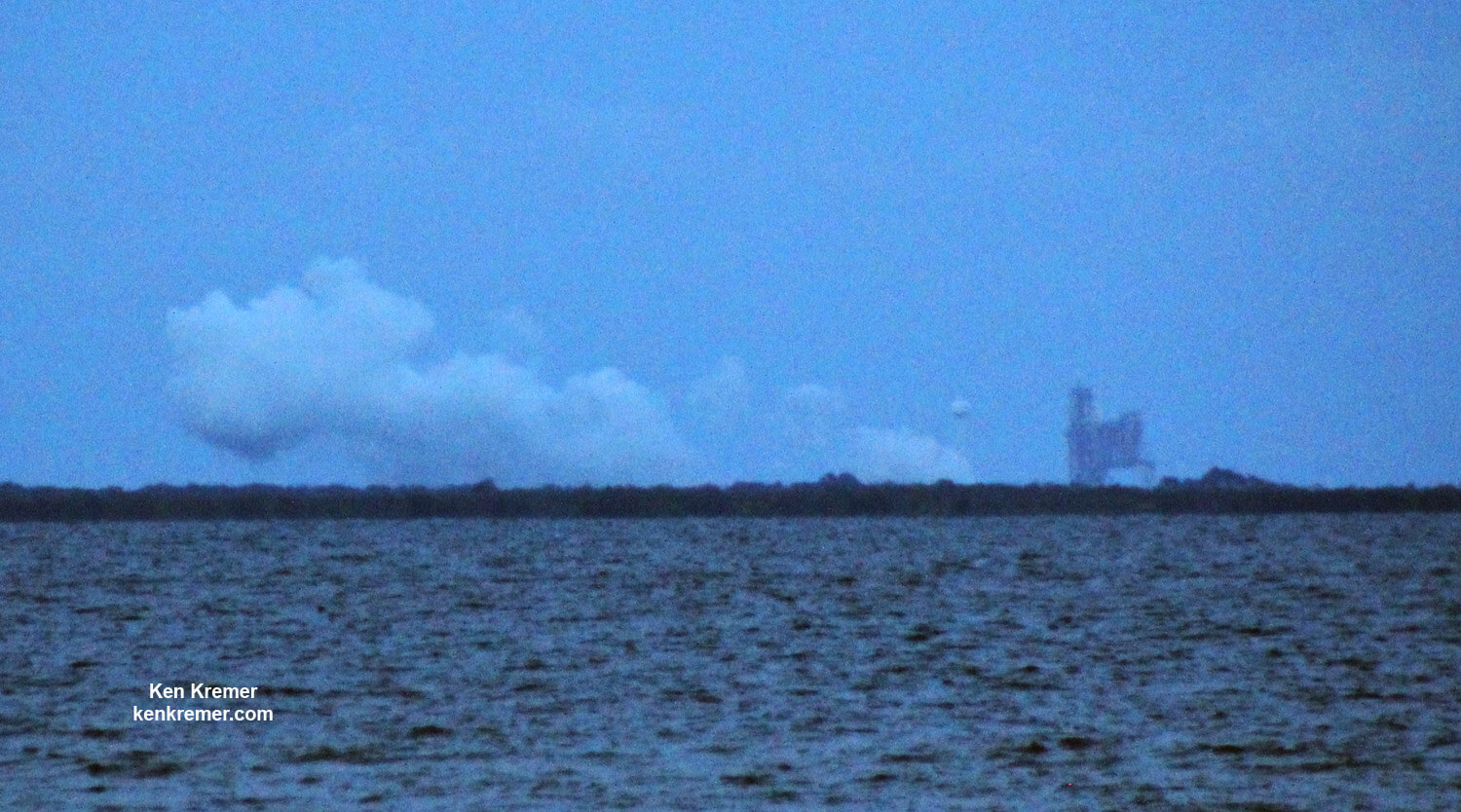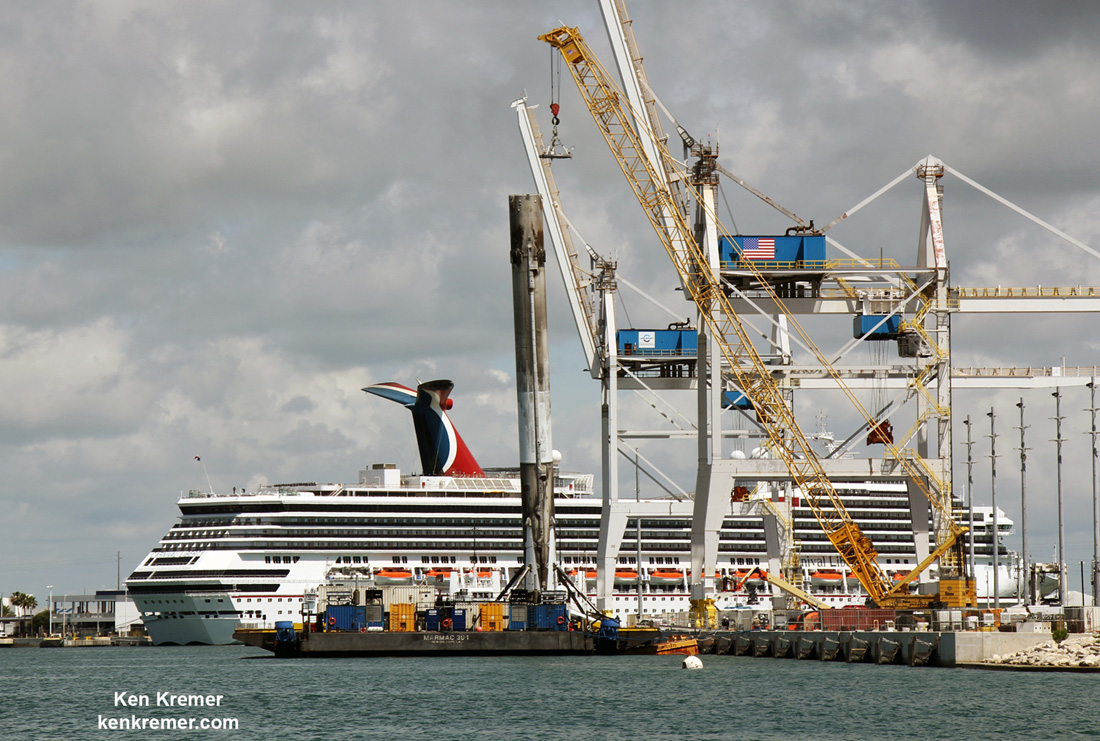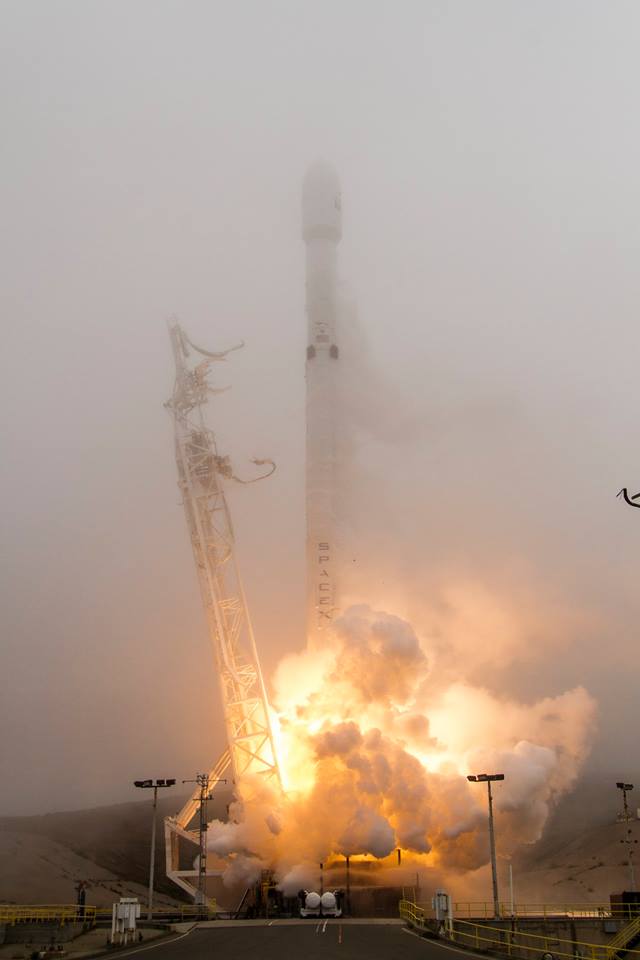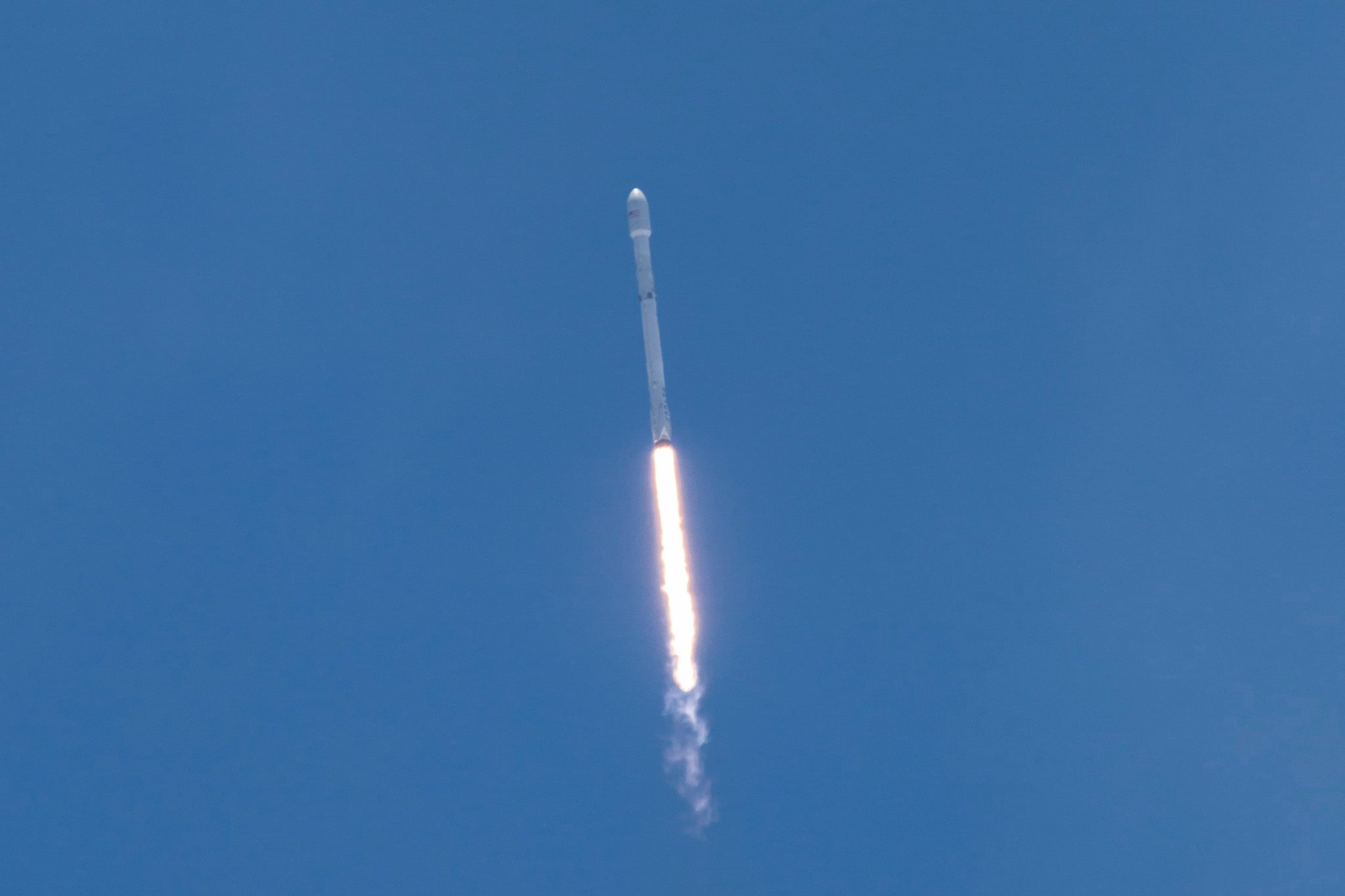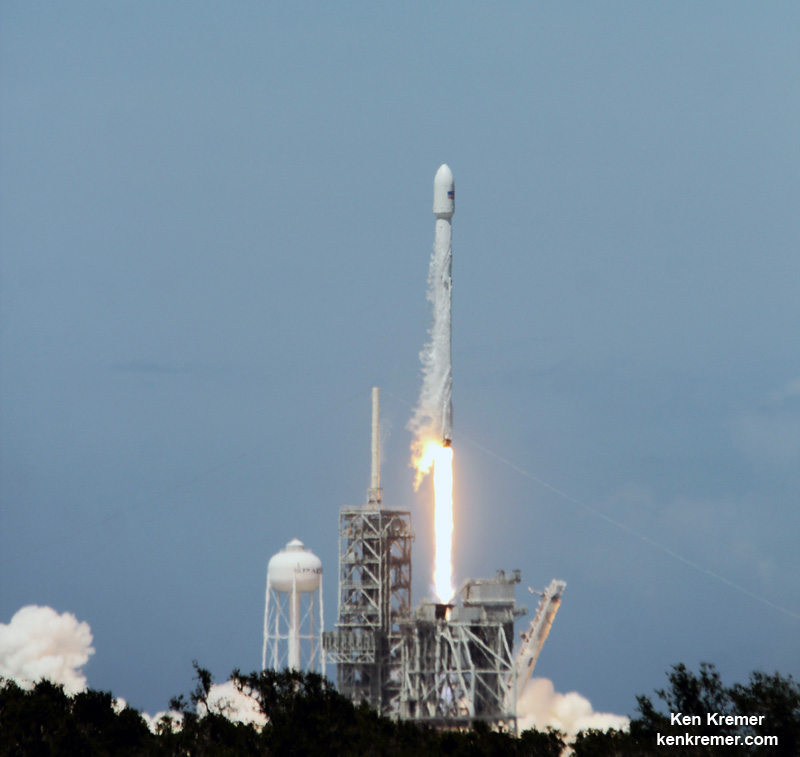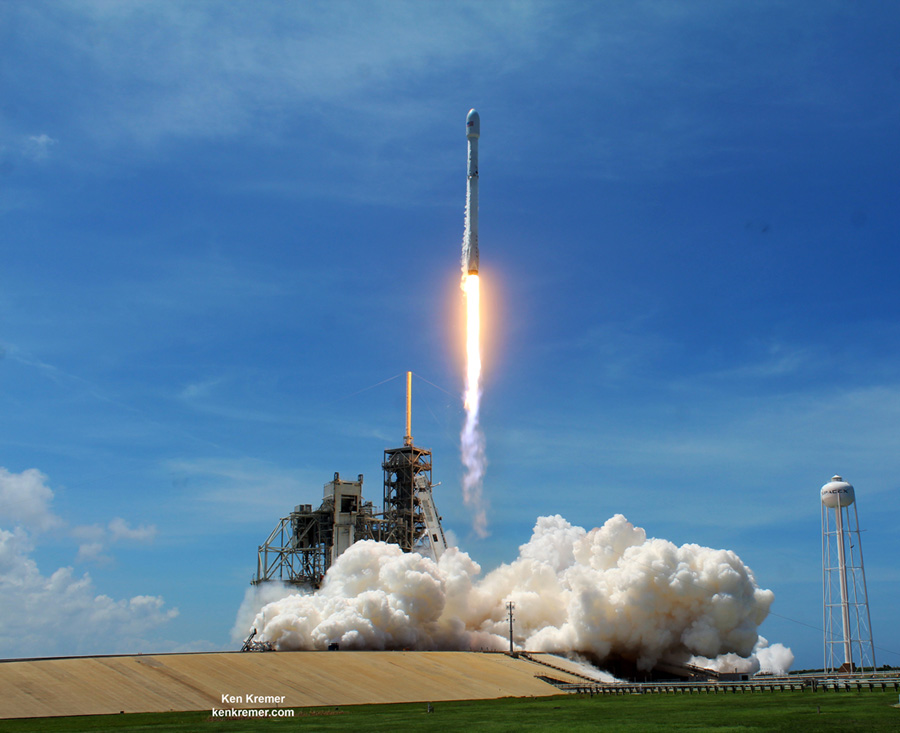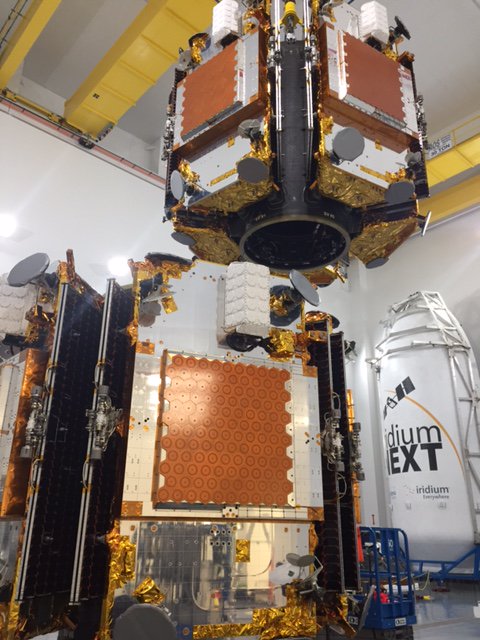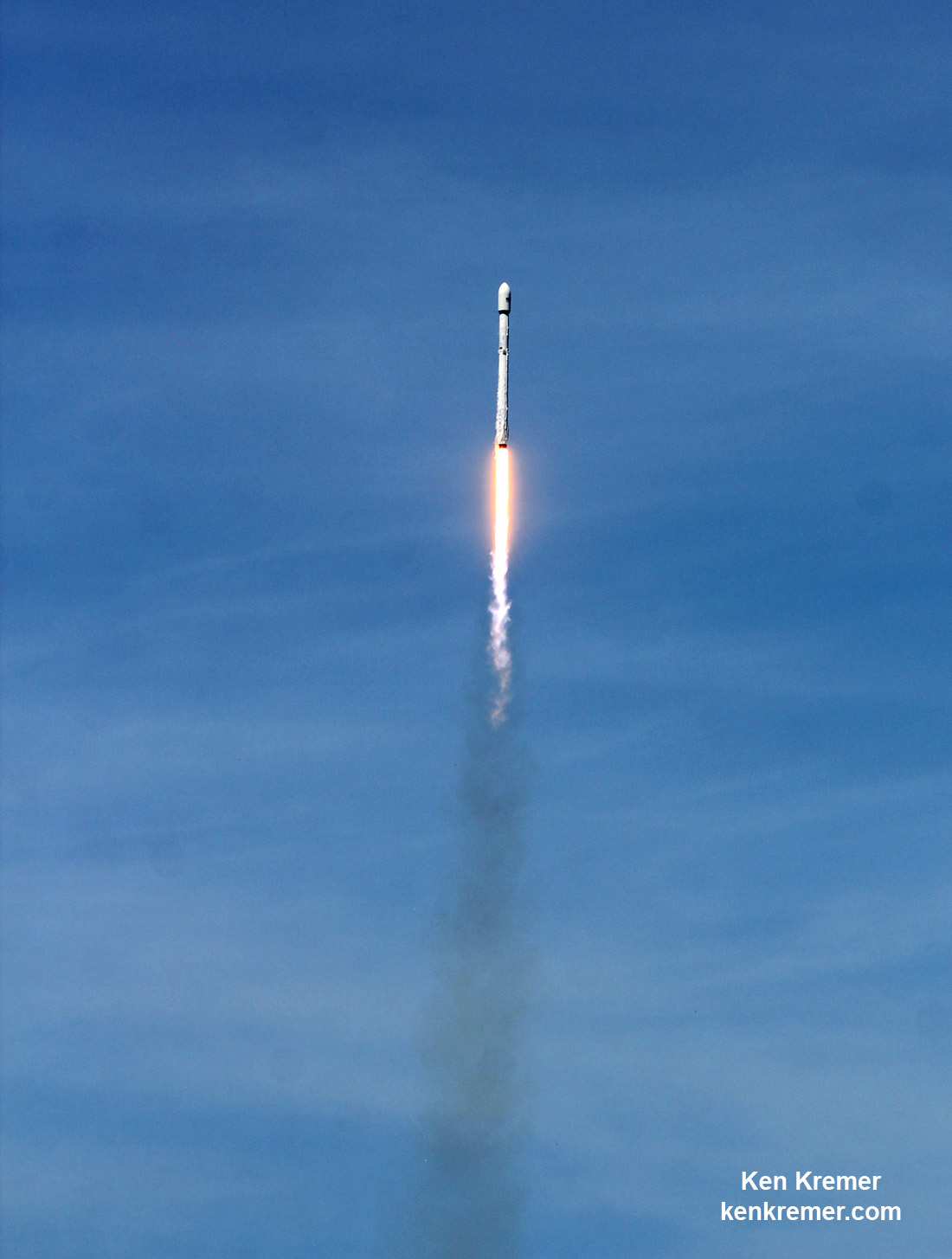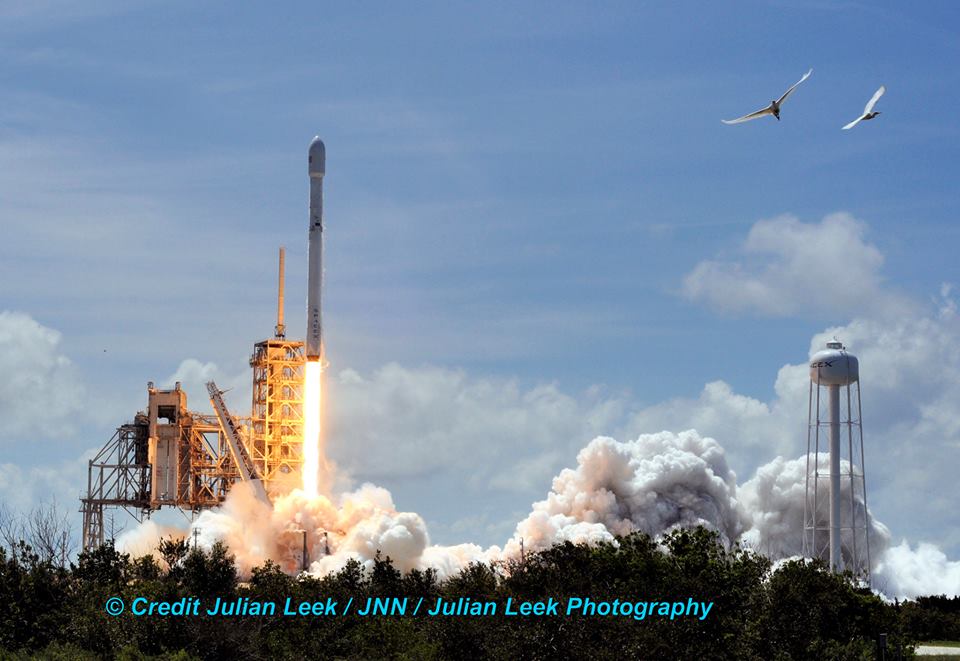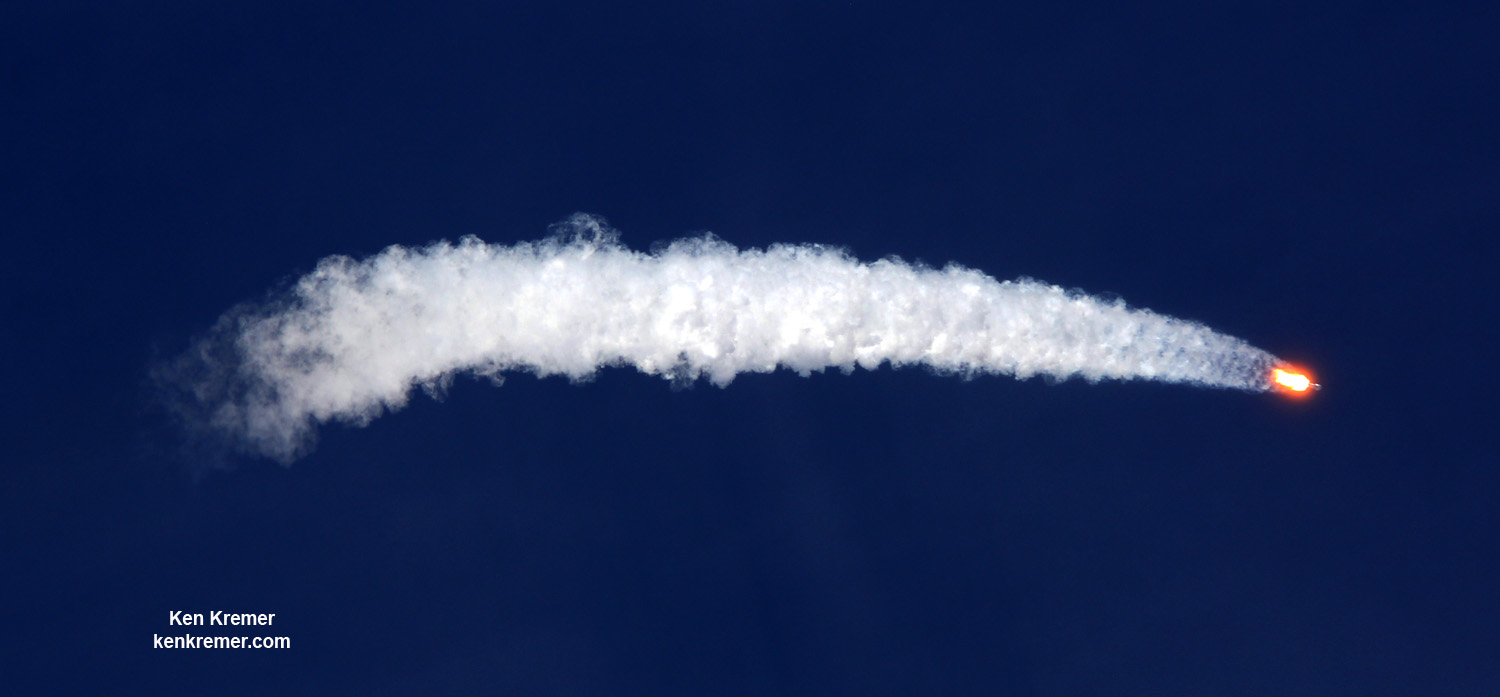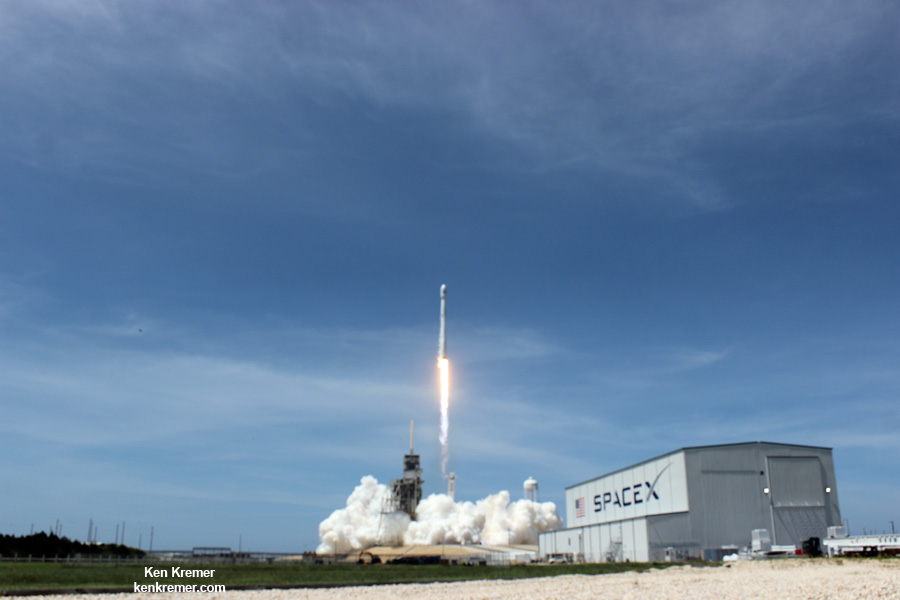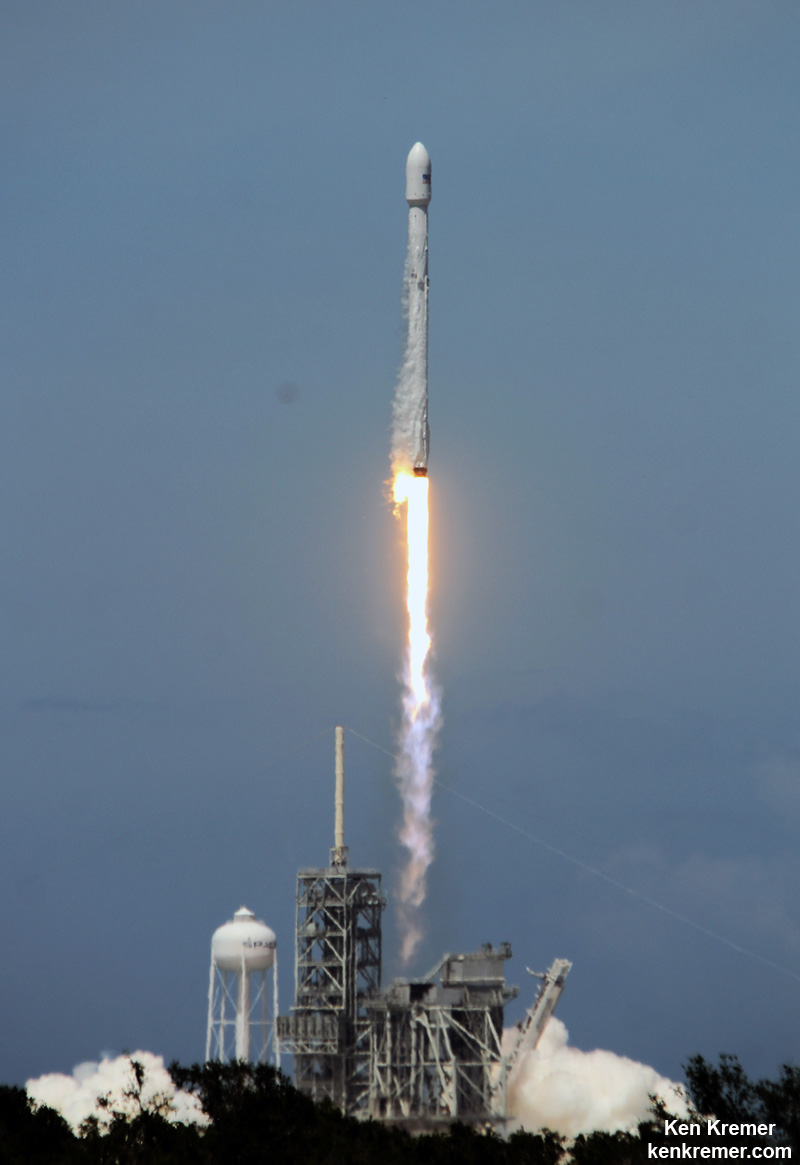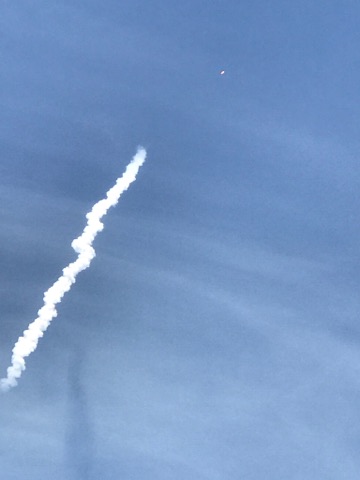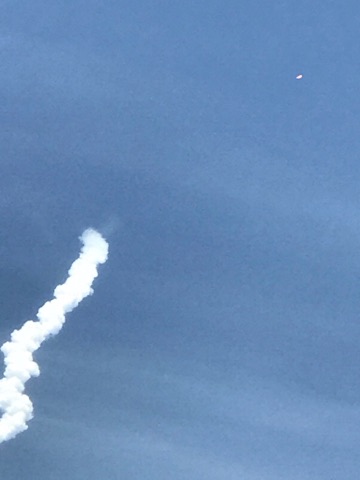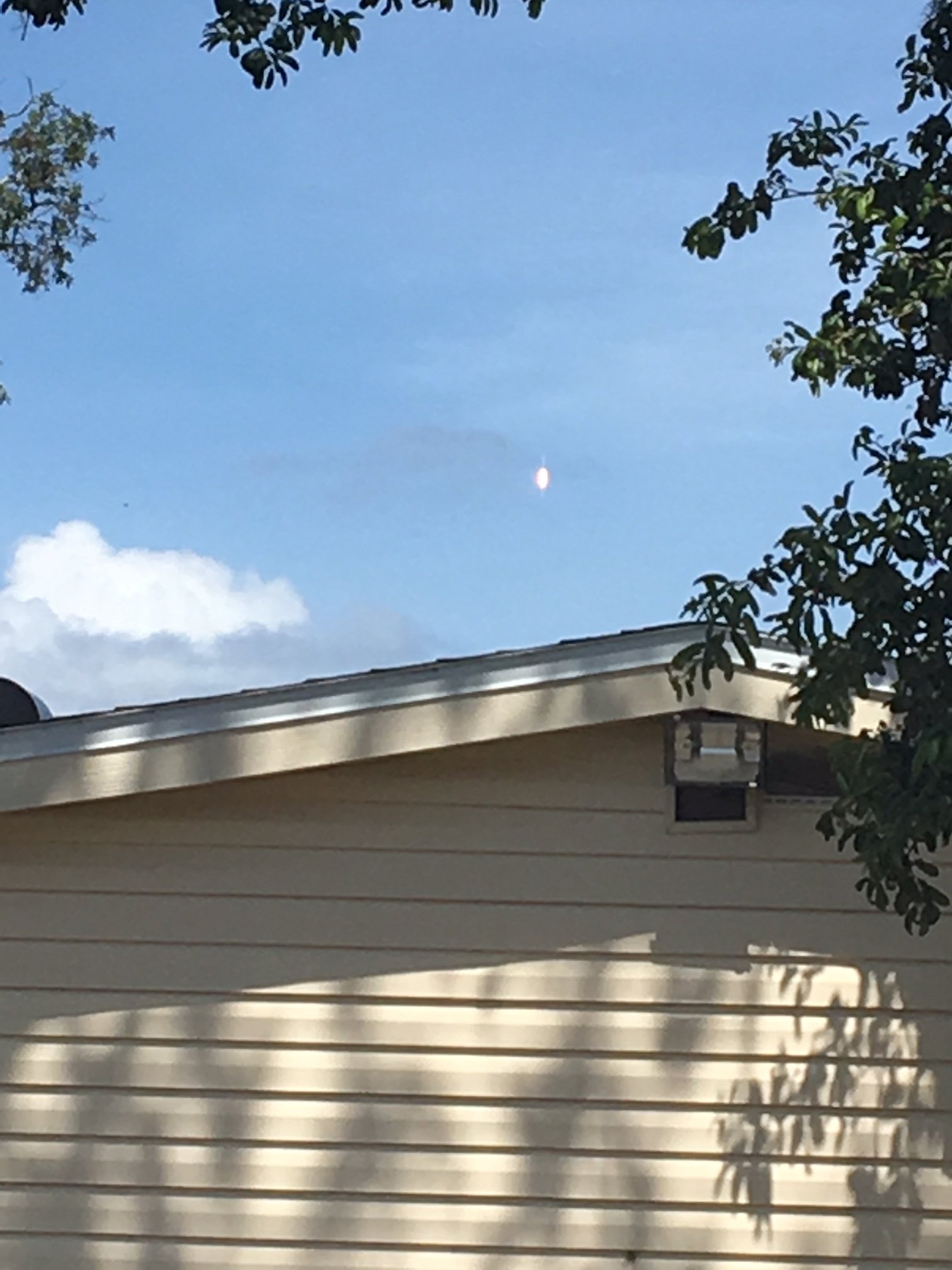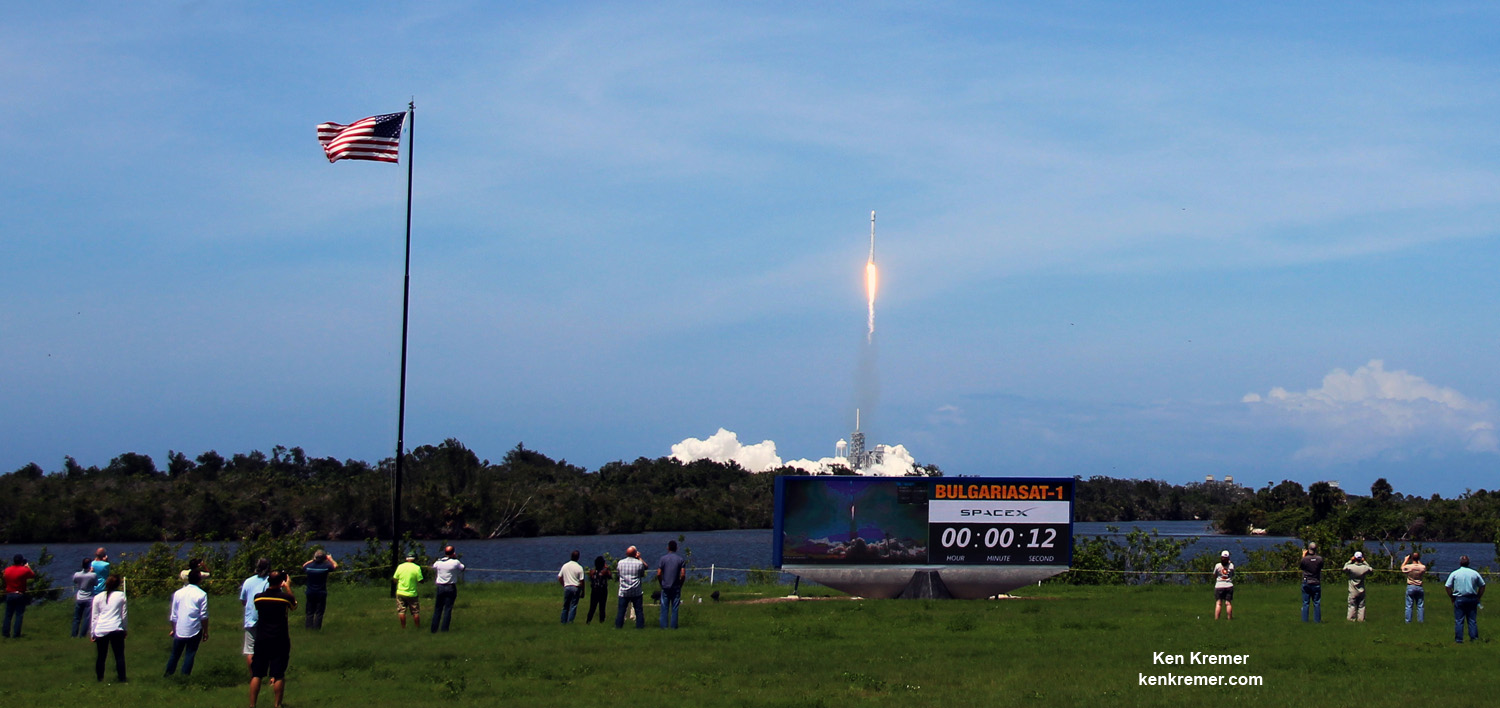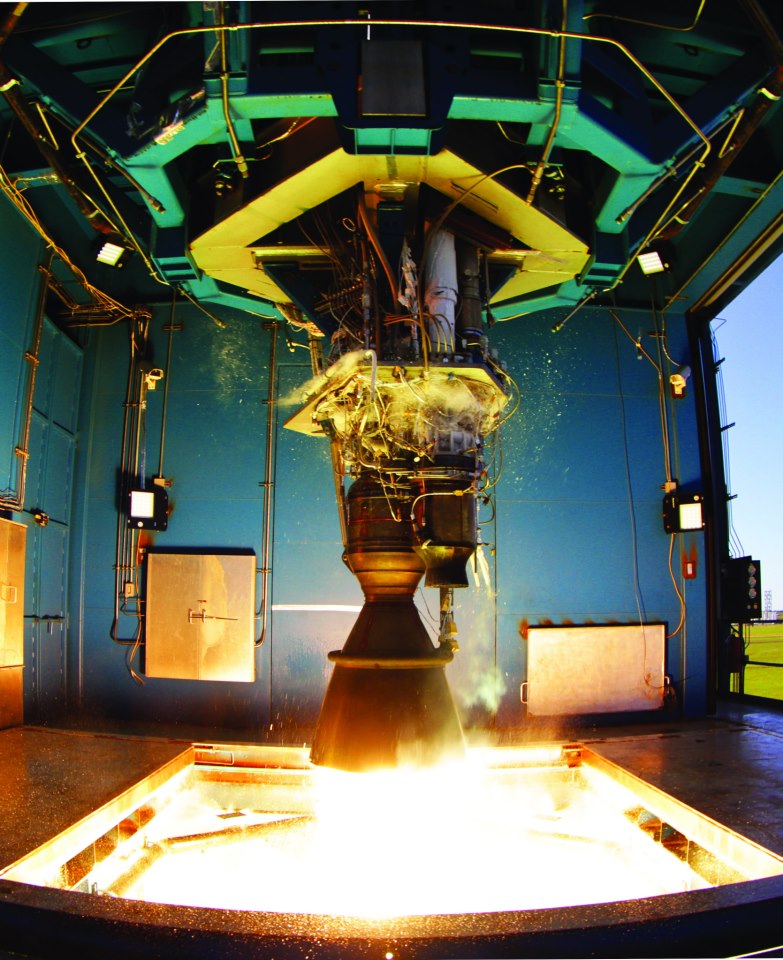
KENNEDY SPACE CENTER, FL – Despite suffering a significant engine testing “anomaly” and fire during test protocols with a Merlin engine that powers both stages of SpaceX’s Falcon 9 rocket, the Elon Musk founded company is forging ahead with an ambitious year end launch schedule that commences this week with blastoff of the secretive Zuma mission on Wednesday evening, Nov. 15. Clearly Musk & Co. feel it is safe to proceed.
While preparing to conduct a test firing of the most advanced Merlin engine of the type that will launch astronauts to the International Space Station (ISS) as soon as next year, something sparked the outbreak of a fire in a test bay earlier this month on a SpaceX engine test stand at their rocket development facility in McGregor, Texas, SpaceX spokesman John Taylor confirmed to Universe Today.
The resulting fire in a McGregor, Texas test bay apparently did not involve an engine explosion as technicians were getting ready to conduct an actual hot fire test. The fire may have occurred as a result of a leak while setting the Merlin engine up on a test stand during pre-test procudures. Details have not been released.
“We do not expect this to have any impact on our launch cadence,” SpaceX spokesman John Taylor told Universe Today.
“SpaceX is committed to our current manifest.”
Since the fire involved the most advanced Block 5 version of the Merlin rather than the currently used Block 4 version, SpaceX engineers and management decided they can safely and responsibly move forward with the upcoming jam packed schedule of Falcon 9 and Falcon Heavy launches, while simultaneously continuing the anomaly investigation.
2017 has been a banner year thus far for SpaceX involving 16 missions to date that ties a ULA record established in 2009.
The most recent launch took place of Oct. 30 delivering KoreaSat-5A to its intended orbit – along with a magnificent soft landing and recovery of the first stage booster on an oceangoing platform that floated ‘back in town’ days later.
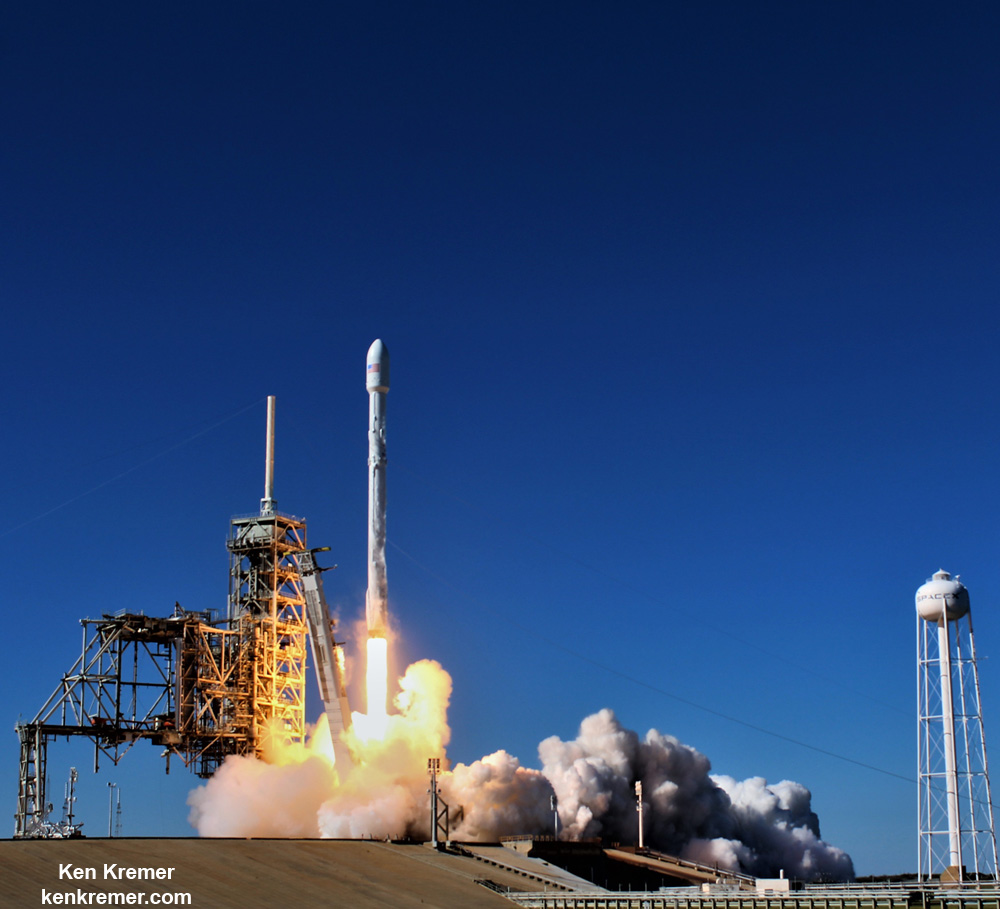
The fire took place on Nov. 4, as first reported by the Washington Post on Nov. 9.
“On November 4, SpaceX experienced an anomaly during a Qualification test set up of a Merlin engine at our rocket development facility in McGregor, Texas,” SpaceX spokesman Taylor told me.
With a slew of critical launches looming starting tomorrow, Nov. 15, SpaceX had to decide quickly whether to pause or move ahead with their final planned launches of 2017 – numbering at least 4 or more and possibly including the long-awaited and long-delayed mammoth Falcon Heavy. It utilizes 27 Merlin 1D engines in the first stage cores.
SpaceX has decided to move ‘Full Speed Ahead’ – after an initial review of the fire incident which is still ongoing.
Seemingly, the fire happened during the set up period for the Merlin engine before the actual qualification engine test had begun. A leak may have occurred around the test stand and caused the fire to brake out.
Although 2017 has been a great year, SpaceX has suffered two catastrophic rocket accidents in 2015 and 2016 as a result of unrelated failures traced to the second stage which slowed down the launch pace as engineers raced to identify and rectify the root causes.
Engineers were conducting a pre-test operation when the test bay fire broke out. It may take a few weeks or more to repair the test stand and resume hot fire testing.
SpaceX has notified customers such as NASA, the FAA and the USAF about the incident – for which SpaceX plans a Dragon cargo resupply mission to the ISS launching as soon as Dec. 4 from Cape Canaveral Air Force Station, FL.
“We are now conducting a thorough and fully transparent investigation of the root cause.”
Fortunately there were no injuries to any personal.
“No one was injured and all safety protocols were followed during the time of this incident,” Taylor explained.
The Merlin engine about to be tested involved the most advanced type known as the Block 5 version that will be used to propel astronauts to orbit inside the SpaceX Crew Dragon.
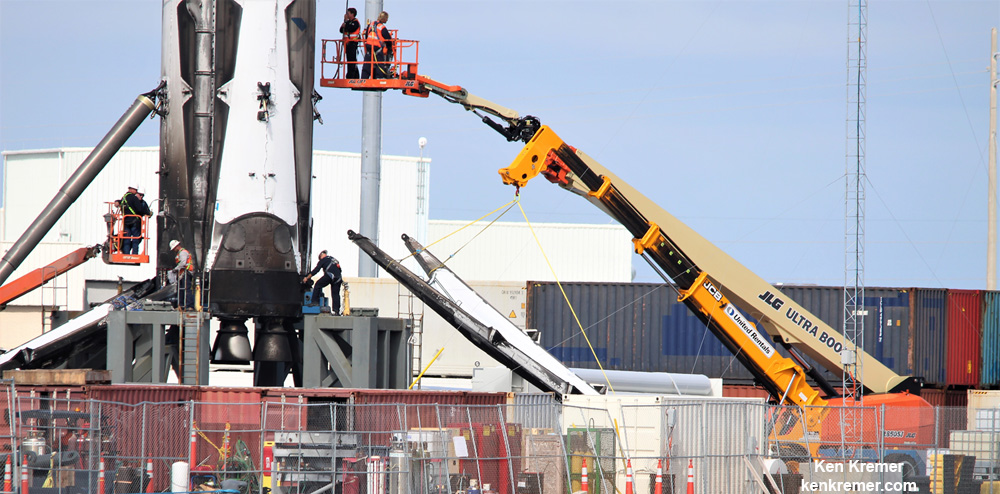
The Falcon 9 is currently powered by 9 Merlin 1D engines of the Block 4 version.
Altogether they generate a combined 1.7 million pounds of liftoff thrust.
SpaceX can continue launches with the less advanced Merlin 1D version because testing of Block 4 is still happening.
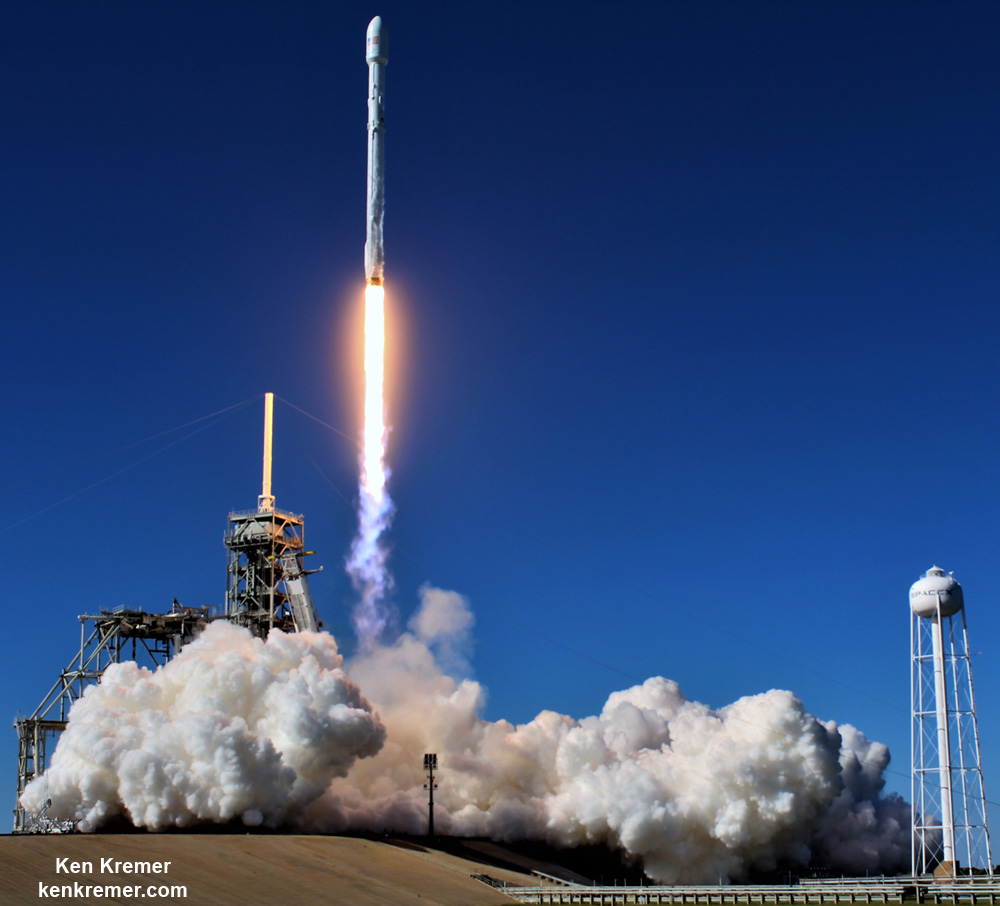
Meanwhile launch preparations are in full swing for Wednesday’s nighttime blastoff of the mysterious Zuma mission for the U.S. government at 8 p.m. EST on Nov. 15 from pad 39A on NASA’s Kennedy Space Center.
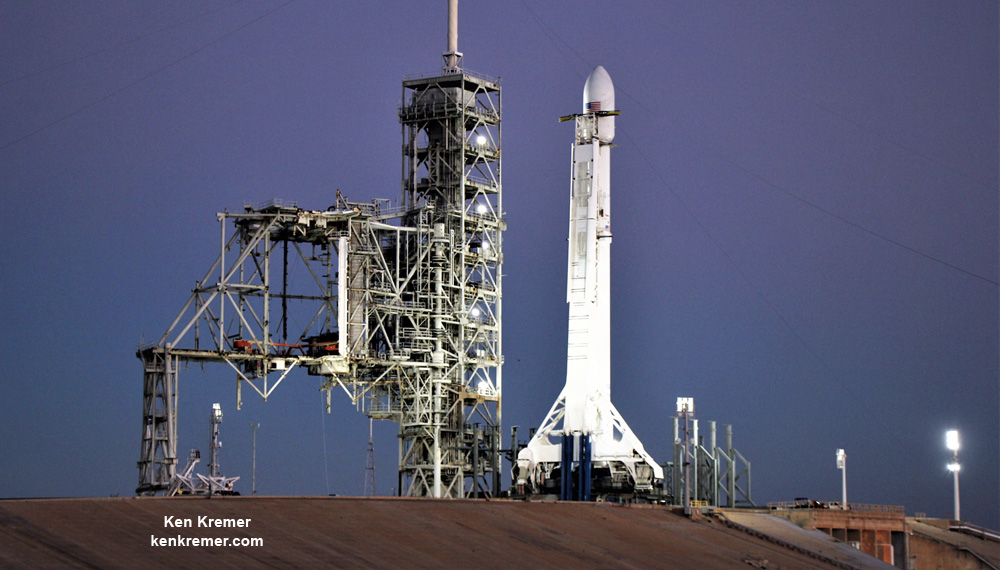
Watch for Ken’s continuing onsite coverage of SpaceX Zuma, KoreaSat-5A & SES-11, ULA NROL-52 and NASA and space mission reports direct from the Kennedy Space Center and Cape Canaveral Air Force Station, Florida.
Stay tuned here for Ken’s continuing Earth and Planetary science and human spaceflight news.
………….
Learn more about the upcoming SpaceX Falcon 9 Zuma launch on Nov 15, 2017, upcoming Falcon Heavy and CRS-13 resupply launches, NASA missions, ULA Atlas & Delta launches, SpySats and more at Ken’s upcoming outreach events at Kennedy Space Center Quality Inn, Titusville, FL:
Nov 14, 16: “SpaceX Falcon 9 Zuma launch, ULA Atlas NRO NROL-52 spysat launch, SpaceX SES-11, CRS-13 resupply launches to the ISS, Intelsat35e, BulgariaSat 1 and NRO Spysat, SLS, Orion, Commercial crew capsules from Boeing and SpaceX , Heroes and Legends at KSCVC, GOES-R weather satellite launch, OSIRIS-Rex, Juno at Jupiter, InSight Mars lander, SpaceX and Orbital ATK cargo missions to the ISS, ULA Delta 4 Heavy spy satellite, Curiosity and Opportunity explore Mars, Pluto and more,” Kennedy Space Center Quality Inn, Titusville, FL, evenings
